Dear White People LA Times,
I can’t believe it’s been so long since I’ve posted. I left the country the morning after Michael Brown was killed and only heard bits and pieces with my jet lagged mind over in Europe. I still haven’t got my head around what went on in Ferguson and continues to happen. And I’m back home now in Los Angeles observing a strange media era that resembles the seventies in a way with ethnically based TV shows like Goldbergs, Black-ish, and the upcoming The McCarthys touted on billboards all over town. Then I’m spending a lot of time in public elementary schools (part of a job that I don’t talk of much, but is becoming a larger, more impactful part of my life) observing a huge diversity of socioeconomic class and cultures, sometimes fretting over difficulties I see. But what got me this morning was catching up on the Sunday LA Times and reading this article on a film called, Dear White People, by filmmaker Justin Simien.
Here’s the passage that raised my hackles:
part of what has also set “Dear White People” apart is the distinctive diversity of influences behind it. Although Simien has been sure to acknowledge leading African American predecessors such as Spike Lee or John Singleton — he introduced an academy screening of Lee’s debut, “She’s Gotta Have It,” in Los Angeles over the summer — he has also made references to filmmakers Wes Anderson, Stanley Kubrick, Ingmar Bergman, Fritz Lang and a host of others.
The article goes on to talk about how African-American millennials aren’t just influenced by black culture:
“I think the difference in our generation, the sort of African American millennial, is we were not only influenced by black culture, we just weren’t,” said producer Lena Waithe…
Okay… Where did jazz come from? Where did hip-hop come from? How did Chuck Berry or Ray Charles get their twang? Who did Jimi Hendrix reinterpret for his biggest hit?
First, it’s just insulting for the writer to posit that a people which encompasses 14% of the US population, rich as “its” cultural expression may be, would only be influenced by what was produced by that minority. Secondly, it’s sad that an artist would get seduced into such an oppositional statement as Ms. Waithe’s claim. (But I fully understand how something can come across as much more simple minded in an out of context quote.)
The affliction of racism gets into us all as it limits our thinking an tries to explain what’s always been there as new. Sorry for that rather generic statement.
But, Dear White People, progress is not in applauding people or yourself for stepping out of a box that was imaginary in the first place.
I’m looking forward to seeing the film. And I hope it reflects a richness that the LA Times writer or editor failed to truly reflect.
(And hopefully now that my hackles have raised, more writing will come!)
UCLA Diversity
I decided at seven that I wanted to play guitar and go to UCLA. So reading this article this morning broke my hear a little. I posted it on my personal Facebook page without any comment, but then a friend commented about being troubled by the poet’s statement “that being black at UCLA left him feeling ‘isolated and uncomfortable’.” My friend asked, “Is society’s message in the 21st century still, “stick to your own kind”?”
It got me thinking and so I thought I’d paraphrase my reply to him here.
I’d guess that message has diminished a little bit in the 21st century, but clearly not completely. I grew up in a very homogenous town of which I was one of a small percentage of African-Americans, and even though there was not an overarching “stick to your own kind” message, I still felt extraordinarily isolated and uncomfortable at times. If you’re the only cherry tomato in a salad of mixed greens, bell peppers, mushrooms, and shredded cheese, you’re still going to stand out. Being one of 48 out of 5700 probably feels that way whatever the rhetoric of inclusion. What’s ironic about this whole thing for me is that as a UCLA freshman back in the day, I had my first experience of feeling included in a “black community.” Later, as I’ve written about a lot, I also felt the same sense of alienation at times within that community. The truth is it’s still really hard to find a diverse community where one cultural norm doesn’t dominate (racial, religious, ideological, etc.). That’s why affirmative action is still something we need as a society, one that includes all factors, not just “race neutral” because race still is not neutral and may never be. (Nor are many of these other factors neutral, but race is one of the most instantly codified.) But that doesn’t mean we can’t all be part of a delicious salad!
Take a look at the video and read the Huffington Post article below. (And yes, I do sort of love that my doppelgänger is the only kid to start off not wearing a Bruin shirt. Ha!)
http://www.huffingtonpost.com/2013/11/08/ucla-black-enrollment-freshmen_n_4242213.html
Who’s Riley Cooper?
Yes, I’m not a football fan. And I’ve been avoiding most tabloid style news of Weiners, and others. But my sister lives in Philly and a prof at her university wrote an editorial on Riley Cooper headlined “Some of your best friends are racists.” What jumped out for me was this:
“And even when racism jumps out and stares us in the face, we are way too invested in the rhetoric of colorblindness to even acknowledge its presence.”
He talks about having “honest conversations about race” with your friends, with those in whom you are invested.
It’s a good read.
Hollywood Protest Sunday Night
Someone carrying a sign shouted, “Justice! Peace!” I was heartened.
As it was picked up in the crowd, the familiar “No” was inserted before each word and I started to leave.
I saw a young man with a poster saying “We are all Trayvon Martin. The whole damn system is guilty.” I saw observers and agitators. We all held hands to demonstrate our oneness. The police outnumbered the protesters and came in riot gear. We’d walked right through them earlier to reach the people. We’d left the circle already when we heard an announcement that weapons would be used to disperse the crowd in ten minutes. I saw a brown young man in a uniform, holding a BB gun. I saw young women in helmets, holding billy clubs, yell at the observers. I saw men backed by the might of dozens of cars, and lights, and civic power put on gloves for the confrontation.
The last cop we saw talked to us. He said, “What are we supposed to do? They have the right to protest, but after three hours other people have the right to get home.”
Trayvon Martin was just trying to get home before he was hassled by someone with a grievance and the willingness to use destructive force.
The cop said, you’ll never have a problem if you obey orders.
That’s debatable.
Trayvon Martin is a symbol of all of our vulnerabilities, and the “whole damn system is guilty” of creating martyrs and monsters.
Yes, Justice! Yes, Peace!
As peacefully as one can, turn a situation of injustice to a moment for justice without violence or threatened aggression, without fear based tactics.
I do fear that this verdict may create more George Zimmermans, people who are so convinced of their own righteousness that they will create situations that cause them to murder in the name of “self-defense.”
But we can change that with continued humane action (even if it feels superhuman) to insure that all people are treated humanely.
Imagine a world where we put as much energy toward eliminating the use of weapons of individualized destruction as we do against weapons of mass destruction.
Let’s create our humane vision.
What Choice?
I sat down with a cup of coffee this afternoon to listen to the latest Radiolab podcast. As it plays, recent photos stream across the TV monitor of my blended family, my colleagues and collaborators. These are random shots of life. We’re at my Filipino/Italian nephew’s birthday. I see snaps of my nonagenarian friend, Lennie Bluett, who’d informed Clark Gable on the set of “Gone with the Wind” that there were segregated toilets on the set in Culver City, embracing Angela Davis, the activist and educator, at the memorial of my good friend Leo Branton, the lawyer who delivered the closing argument leading to her acquittal in 1972. I see the rhythm section from a recent recording session. I see my friends Ossie and Haize performing with me. I see photos from my friend Aimee’s visit with her baby Echo and more mixed babies in a mixed community. I see a photo of me meeting Grace Lee Boggs. It’s just so beautiful.
And then I hear this. It breaks my heart. OK, it’s an Appalachian story, so prejudge that as you may (though probably not a good idea…). It’s about a mother and two daughters, all “apparently white,” though two identify as black and one emphatically does not.
Listen. I’ll write more later. I have to run out to Inglewood to meet my white mother at her black best friend’s home for Sunday dinner. I’m so grateful for the nourishment I’ve received from this community. It’s helped me transcend experiences I’ve had that resonate with this story.
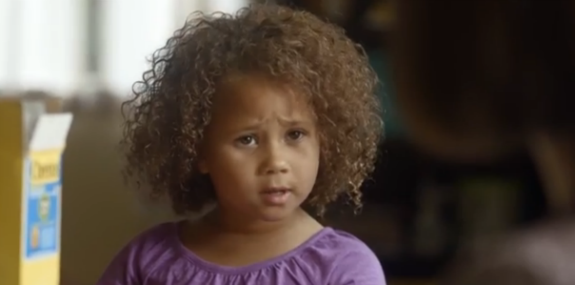
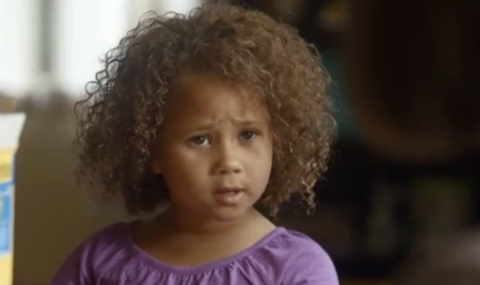
Sweet Breakfast Cereal
When my girlfriend showed me this yesterday, I admit to thinking, “Wow, they’ve really done it!” It’s not the first commercial to show interracial families or visibly mixed kids. But something in the quiet, direct dialogue, the clear relationships, and familial care in this really got me. I hate to even spoil it for you by describing how the kid’s concern for her father totally hit home for me. So watch it now before I wax melancholic:
httpvh://youtu.be/kYofm5d5Xdw
Sure, the little girl is over the top on the cuteness scale. (She’s a throwback to Shirley Temple: overwhelmingly sweet, though watching that creative mind turning is irresistible.) But what I’m feeling are the conversations overheard — or in which she’s been included — about the higher risk of heart disease for blacks, especially men. I remember the strange feeling I had wondering why my dad was more likely to have high blood pressure and heart disease than my mom. Would he develop sickle-cell anemia? Why do only black people get that?
I’m not surprised by the hateful comments that forced General Mills to shut down comments on the YouTube post. I’m glad that some people are. That’s collective evidence of some change.
What inspires me is that there was even a choice made to use an intact, thoughtful family who is unambiguously mixed to sell cereal. Sure, it wasn’t as big of a “[cref obamas-speech-on-race Julia Moment]” for me as when I heard candidate Obama talk about the feelings of bias in his own home with his own blood relatives five years ago. But it was pretty stunning to see the portrayal of a normal family, not cast as exotic or comic relief where normal life problems are examined and racial particularities are an implied fact of life.
John Lewis & Cory Booker on Finding Your Roots (PBS)
Oh my flippancy…. This show blew me away. Such important and love centered stories. I loved it!
Watch John Lewis and Cory Booker on PBS. See more from Finding Your Roots.
A Radical Welcome on King’s Birthday
On the day we as a nation celebrate Martin Luther King, Jr.’s birthday, I’m thinking about how I spent his actual birthday on Sunday. My white Atlanta-born girlfriend — a woman who was in her mother’s womb as she made sandwiches for black families coming to ATL for MLK’s funeral — and I rolled out of bed and hurried out to All Saint’s Episcopal Church in Pasadena for a talk on King and the transformative God. The lecture wasn’t as promised, but rather the speaker, the African-American Episcopal priest, Stephanie Spellers, spoke on “radical welcoming,” welcoming “the other” into your community, uncomfortably adapting to them rather than asking them to conform to your rules alone. She spoke while needling us that the Episcopal Church is the whitest and richest church in the US.
We left later church service — where this Hawaiian-born, Irvine-raised mulatto knew the more of the Negro spirituals being sung than his ATL-bred partner — for lunch with my Filipina ex-stepmother. She is the head of what I call my extended Southern California family; especially now that no close relatives of my nuclear family are on this coast.
At Full House Seafood in Chinatown, we celebrated the 71st birthday of the 12th of 13 children with at least four generations present. I get a little confused, but I know my four-year-old step-nephew is the uncle of the five-year-old son of my ex-stepmom’s niece’s daughter. The eldest present were the 6th child of the 13 and her white ex-military husband. The youngest was the wisest-looking one-year-old I’ve ever seen who had clear designs on my woman.
My Italian/Filipino-American step nephew chased me around with poppers for a few minutes before we shopped in Chinatown for a bamboo steamer for my mother to take back to her small town in New Hampshire. Leaving Chinatown we saw the stirrings of a potential fight between a middle-aged Latino homeless-looking man and a young tattooed Aryan-looking man. After some face-on-face hateful speech, they both eventually walked away. I don’t advise getting into the face of an angry Aryan on a Sunday in Chinatown.
We drove back to our place on the busy road in a beautiful canyon for a short break.
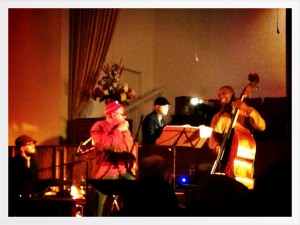 A couple hours later we headed down to the Leimert Park area to Bryant Temple AME Church to hear the wonderful singer, Dwight Trible do a Martin Luther King celebration concert. We arrived late, so I listened behind the window while my girlfriend went to the restroom. From where I stood I could see my reflection in the pane and a woman who would not look away from me. I don’t know if she was mentally disturbed or just disturbed by me, but looking at her face and my pale reflection made me feel extremely white even as I listened to a dreadlocked woman quote and discuss my favorite speech — the “Mountain Top” speech.
A couple hours later we headed down to the Leimert Park area to Bryant Temple AME Church to hear the wonderful singer, Dwight Trible do a Martin Luther King celebration concert. We arrived late, so I listened behind the window while my girlfriend went to the restroom. From where I stood I could see my reflection in the pane and a woman who would not look away from me. I don’t know if she was mentally disturbed or just disturbed by me, but looking at her face and my pale reflection made me feel extremely white even as I listened to a dreadlocked woman quote and discuss my favorite speech — the “Mountain Top” speech.
We finally took our seats.
The crowd and the band were diverse, though I often find myself scanning for cultural tourists when I’m in a majority black setting, especially a church where so many members are dressed formally. I wonder if I am with my multi-culti hippie crew when I roll in and play music or support my friends onstage.
So to bring it back to the unsuspected start: this is the radical welcome and its partner, the radical seeker. As a biracial person in an era when claiming both is an option, you have no choice but to participate in a dynamic where your existence makes some uncomfortable. If you choose to claim your whole self and ancestry, you necessarily have to put yourself in positions where you will feel uncomfortable, perhaps a cultural tourist.
The woman may have stared at me, but the community embraced me at Bryant Temple AME.
I awkwardly sit in my extended Southern California family; I even remember horrible things being said in the home my father shared with my stepmother when they were together. But we continue to show up for each other, welcoming each other into our lives easing awkwardness with familiarity and love.
I know there’s a special excitement when I show up at All Saints because I’m young and darker than a lot of the congregation. But we’re getting to know each other better all the time.
My girlfriend and I were back home by eight. We had dinner with leftovers from the crazy chicken en Español. We watched a British sci-fi television series and danced around the living room to music from a melancholy Scottish band. I felt myself radically welcoming her. It’s in relationships, political, community, and personal that we create community from chaos.
“New Again: I was with the Shark” – Gil Scott-Heron Tribute
httpv://youtu.be/6ps2y3HvY2A
From “All/Us/We: a Tribute to Gil Scott-Heron” curated by Kevin Spicer at Highways Performance Space, Santa Monica.
“Three Playing Fields” Poets & Writers/Connecting Cultures
This is from an event called Connecting Cultures, presented by Poets & Writers Magazine at Beyond Baroque last June. The piece itself is an excerpt of the longer piece I did for the Emmett Till Project last year at Highways in a show curated by Kevin Spicer. I also did a performance of “Three Playing Fields” for the Mixed Roots Film & Literary Festival this year.
httpv://youtu.be/3neFn2kQPsc
Hilarious
OK, I was scared when I saw this posted on my friend’s Facebook, but I thought it was actually hilarious, and filled with mulatto moments!
httpv://www.youtube.com/watch?v=ocM__hQovcI
Great essay from Goldie Taylor on the Grio.com
Painful examination of the continuity of life in pre and “post-racial” America. Watch Taylor read it on the Rachel Maddow Show.
Buddy Collette
I’ve just heard that Buddy Collette has passed.
Buddy was my friend. My last words to him were “I love you.” And his to me were “I love you, too.”
It was just a random meeting at Ralph’s market across the street from where I’m sitting right now, at the Farmers Market. I was in the produce section, squeezing oranges and this handsome elder gentleman came over to me and said, I bet you’re a musician. I was in my early 20s, with a little buzz around me, ready to take the rock ‘n’ roll world on, so I was a little used to this sort of thing happening. But this man had spark in his eyes. We spoke for a few minutes. I felt very encouraged by him. It felt sweet to be recognized by an elder. I imagined myself in his place someday, encouraging another kid. I wanted to be part of the tradition. I’d always felt such a gratitude when older black men, who’d had to struggle so much, stopped to give me encouragement — a post civil-rights kid, half white and quite privileged. It made me feel a little guilty. Yet it inspired me to be part of the tradition of giving back, of encouraging young people to be the best they could possibly be, and to affirm that you, as an elder, recognize the value in their expression.
After the man moved on, a younger white couple approached me and asked if I knew who he was.
“He said his name was Buddy,” I said.
“That’s Buddy Collette! He’s a jazz legend! You’re a very lucky guy.”
A few weeks later I was in the Bob’s Big Boy near my apartment on Wilshire Blvd, and there was Buddy at the counter. We said hello again and a friendship was born.
We never got to play together, but over the years I’d go to see him play or tell stories of the old days on Central Avenue, stories of him and young Mingus breaking bottles and stuff to give to Simon Rodia for the Watts Towers that were being built, or how he convinced Charles to give up the cello for the bass, and join his band. They’d jump on the red line and play in the train cars for fun. I loved hearing how he got the unions together, first through jam sessions and musical exchanges with the white classical musicians of Local 47, then the true amalgamation of the Unions. It’s amazing how different the world seems now. It’s hard to imagine my friend, in my city, not being able to join a group with other musicians simply because of his skin color. But that’s what Buddy and this community of artists had to deal with and, mischievously at times, navigate.
Then later, after his stroke, Buddy started to show up at my events a little more. It thrilled me when he came to the opening of a film I scored, or when I’d hear him talk up my talents and versatility to other people. When he came to see me at Kenny Burrell’s birthday performance at Royce Hall, he told me I had what Nat Cole had with my ability to sing. I should take that to heart more than I have.
One of my favorite conversations with Buddy was at a memorial for a dear friend of ours, Geri Branton. He told me that he was playing piano with his right hand. He was so excited by the voicings he was discovering. He had the passion of student just getting the concepts that would open the entire world to him.
That delight in discovery along with his deep memory was what made Buddy so special. His stories and music were so good because he was always attentive and curious. My sister and I took him to dinner one night at Versailles’ Cuban restaurant after seeing a play by Roger Smith about Watts. Again, he had a pouring out of memories and a delight in going to theater and us hanging out together. He just brought so much joy to my life! And he reminded me that there were always new discoveries to be had in our city and in our lives.
I’m also remembering the time sitting with him and Brock Peters at Geri and Leo’s 50th Anniversary party. Seeing these two men meet for the first time showed me the humbleness and excitement the greats have. They were passionate about each other’s talents and the growing each of them was still doing.
That spirit endures beyond the body, the spirit of affirmation, encouragement, aspiration and the desire to connect with other beings. Buddy connected me to the past, present and a vision of a beautiful future of respect, love and possibilities.
Mulatto Beverage…
 My friend has a “Black, Like My President” mug.
My friend has a “Black, Like My President” mug.
From it, she drinks tea with milk.
Mixed Roots is Saturday…
Mixed Roots Festival 2010!
Talk about your mulatto moments! The Mixed Roots festival is a place you can do that and have people nod, laugh, and hug you in recognition. There may still be some furrowed brows, but it’s a safe house. Your friendly blogger is reading excerpts of his piece from “The Black Body” there. Sharing the mic with me in Readings Program 1 is Tai Babilonia, Carleen Brice, Kevin Mihn Allen, and Kerina C. Pharr.
Don’t miss this festival. It’s centered around the largest “Loving Day” celebration on the west coast!
Lastest Mulatto Events
I read last night for Susan Hayden’s Library Girl series in Santa Monica. Beautiful time, though my piece scared me. I had a couple safe ones in my back pocket. But luckily she asked me to sing a song to start the night. With that, I figured I could engender some good will before getting into the nakedness of a new body centered essay. This one was more gender oriented than about race.  But the interesting thing to explore is that like women, people of color – and perhaps especially people of ambiguous racial phenotypes – are consistently the subject of physical scrutiny. Body discussions are always difficult, but exploring sexuality, acutely aware of the male power dynamic, is one of the toughest areas for me. (I typically throw in a couple references to lighten up the subject, but you’ll have to read my published work or come to a performance to know exactly what I mean. I’m feeling reserved in my online presence.) The piece seemed to go down well, which pleased me. And connecting with old friend, Dan Navarro, and new friend, Julie Christensen, was a truly grounding experience.
But the interesting thing to explore is that like women, people of color – and perhaps especially people of ambiguous racial phenotypes – are consistently the subject of physical scrutiny. Body discussions are always difficult, but exploring sexuality, acutely aware of the male power dynamic, is one of the toughest areas for me. (I typically throw in a couple references to lighten up the subject, but you’ll have to read my published work or come to a performance to know exactly what I mean. I’m feeling reserved in my online presence.) The piece seemed to go down well, which pleased me. And connecting with old friend, Dan Navarro, and new friend, Julie Christensen, was a truly grounding experience.
I’ve got a couple more readings for my essay from the Black Body coming up in June. June 12 I’ll be featured at the Mixed Roots Film and Literary Festival. Last year I got to close the festival musically. This year I wanted to try something different, so I applied as a writer. And on June 23rd, I’m going to be part of the prestigious [ALOUD] series at the Central Library downtown.
Skip Gates’ New TV Series
…and the “baddest genealogy story I’ve ever heard….”
This one cracked me up. I haven’t been paying as much attention to Henry Louis Gates as I might’ve before. But he’s kind of reminding me a bit of Michael Steel with his colloquialisms.
“No matter what laws of segregation, the one thing that DNA shows is that when lights came down, we were all getting down,” Gates said. “We are all mulattos.”
I laughed my mulatto ass off to that one. Yeah, “We’re all mixed.” I’ve heard that a few times. Too bad the mulatto cop that arrested him couldn’t recognize his mulatto brother last year, or vice versa. I know he was trying to be humorous. I appreciate that. I giggled. It’s true, too (that no blood is pure). But it still kind of irked me – just a little bit.
http://www.latimes.com/entertainment/news/la-et-faces-of-america10-2010feb10,0,1477516.story
Facebook Doppelgängers
I don’t know how these things get started on Facebook, but I got hooked in. Someone started this Doppelgänger week so I thought I’d think about all the arbitrary people I’ve been compared to. Not always physically, but more often than not, yes.
Here’s my post:
A parade of biracial people, black musicians and a surprise.
My Doppelgängers and people I’ve been compared to.
Jennifer Beals – In high school, “You know, don’t take offense, but you kind of look like Jennifer Beals”
Lisa Bonet – Later, “You know, don’t take offense, but you kind of look like Lisa Bonet”
Tracy Chapman – “Hey, you’re kind of like a male Tracy Chapman.” At least I made a lot of money off that when I got signed to EMI Publishing.
Jeffrey Gaines – But Jeffrey got the big record deal. The same Chrysalis guy was at both of our shows a lot during the time.
Lenny Kravitz – When I put a band together, I got this all the time. I had a couple musicians that overlapped, so it’s not entirely unexpected, but we probably sounded more like the Counting Crows. The funny footnote to this was my friend Sam in college (who really just wanted to play bossa nova guitar) kept trying to convince me to try his friend Lenny out as a bass player, but I was convinced that Sam was the bassist for me, so I never met Lenny then.
Terrence Trent D’Arby – “He’s kind of like Terrence Trent D’Arby as a happy go lucky kid,” someone wrote in the press somewhere.
Slash – That’s pretty easy from this photo.
Kristoff St. John – Oh and there was this time when I was auditioning for movies, and people used to call me his name every once in awhile. He got buff, I stayed skinny (well sorta).
Michael Jackson – Of course.
Tom Petty – This is a joke…sort of. I put this in for arbitrariness of this all. The story is that a record exec I knew from the eighties and I bumped into each other at the baggage claim one day after my first CD came out. This was a record I did with Jeff Trott and some of the other folks that were playing with Sheryl Crow at the time. We’d put the CD in his 90’s era trunk changer. And as we listened he said, “This would be really great…if you looked like Tom Petty.” Then we got to track 7 of my 6 song EP. Yeah, the discs had switched and what came out was a Boyz to Men sort of clone. The exec turned to me and said, “Now here, it sounds like you’re on to something!”
I mean I can see the resemblance in some of these people, but mostly I think it was just that there wasn’t enough biracial or even bicultural representation in the culture as I was coming up. That’s why I’ve told the stories I do throughout my career. Some of these Doppelgängers have been my friends over the years, which is kind of funny after they felt like a thorn in my side as I was younger. But we usually had a real instant affinity when we met. Maybe that vibe contributed to the comparisons…
Dyson on Hulu
As in most things media, the headline – “Where’s the Racial Progress Obama Promised?” – distorts the facts. I may be a curmudgeon and think things aren’t great , but when you’re quoting poll numbers that show an increase in the positive numbers, why frame it as a problem? And this is from Liberal friendly MSNBC. Interesting discussion with Michael Eric Dyson, though.
First MLK Day after BHO
“A nation that continues year after year to spend more money on military defense than on programs of social uplift is approaching spiritual death.”
— Martin Luther King, Jr. 1967 from “Where Do We Go from Here: Chaos or Community?”
Chaos, Community or Solitude?
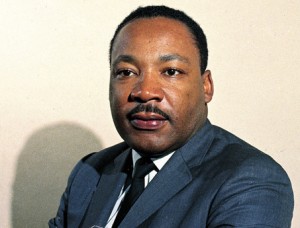 On the first MLK Day since Barack Obama’s inauguration, I chose solitude to ponder where we’ve been in this year.
On the first MLK Day since Barack Obama’s inauguration, I chose solitude to ponder where we’ve been in this year.
It’s a year later, the first Martin Luther King holiday since America elected it’s first “black” president. It’s funny, I was going to write the first president of African-American descent, but then I thought, that’s not exactly true. He is the first black president of the USA and he’s clearly a “hyphenate” of African and American descent. But he’s not the descendant of American slaves, the people Martin was trying contemporaneously to lift up. He’s the son of an African culture inspired by Martin Luther King, Jr., like Nelson Mandela and others. It will truly be something when a dark brown descendant of southern slaves will claim that office as well as the audacity to run as the president for all Americans, while speaking in his true voice. (I’m thinking in negative comparison of a poseur like Michael Steele who uses ghetto-isms to show he and the Republican Party are down with black “folks.”) Jesse ran with good ideas but was marginalized because he never truly seemed to speak convincingly as a candidate for all citizens. Al Sharpton had some good ideas, as well, but also seemed too marginalized by his past and present presentation. Shirley Chilsolm is the only candidate pre-Obama that really seemed to have an all inclusive progressive agenda. I watched a great documentary on her a few years ago called Chisholm ’72: Unbought & Unbossed, and I would’ve voted for her had I been old enough — though, ironically, I do remember seeing her as a kid and thinking how odd it was that there was this black woman, skinnier than my grandma running for president. I was a McGovern kid in my 6-year-old wisdom!
Anyway, what do we have in terms of mulatto moments after a year of Obama?
Obama may not be the descendant of slaves, but he’s certainly suffered the attempts at dehumanization that come from its legacy. What would’ve been the fall out if George W. Bush had said the police acted stupidly in arresting William F. Buckley inside his vacation home in Zimbabwe because they’d heard reports of a break-in in the black part of town? (He was alive during the Bush years.) The whole “Birther” thing was just another old farce to delegitimize the rights of a black man. If Henry Kissinger’s son were born to a white American mother in Hawaii and wrote a book about it twelve years before he ran for President, where he copped to going to a Muslim school, using drugs and living with an illegal alien, would his honesty have been questioned with regards to his birthplace. I don’t know about the “Tea-Baggers.” They seem to overlap with the Birthers, but Americans have always had issues with taxation. The problem is that people whom healthcare is supposed to help are the ones screaming so loudly about their tax dollars being used to help others. The Boston Tea Party was about taxation without representation. The Tea Partiers have representation. There’s a legitimate gripe that “Elites” have more representation, but that’s no more the case with the Democrats than the Republicans. But the vitriol is much stronger against this Administration, which arguably represents the poor more than the last one did. When anger and distrust of the elites was brought up then, it was combated by saying the aggrieved were un-patriotic, or worse. Now maybe I’m calling the angry ones racist spoilsports. Maybe that’s a similar accusation. It’s been said Democrats are always subject to more vitriol from the “heartlanders.” But isn’t that also true that the Dems are always considered the party of minorities and women?
More than one friend of mine has remarked that it felt like we were post racial for about a day after the election, then it was back to business as usual. For me it was that moment walking into the bank coming home from Vegas after canvassing on Election Day. My teller was a young black man and I just felt so good for him. I know that’s weird and entirely racial, but it was an exhale that said all opportunities are open to him. I walked around that day thinking that no one questioned my legitimacy as an American. The answer to the question, “What’s your nationality?” would be simple. “American, just like the President.” It’s sad that I carry around that sensitivity that people will try to delegitimize my status as part of the American community, but if you’ve been asked the question, “What are you?” in addition to “What’s your nationality?” thousands of times before you’ve reached the age of consent, you’re bound to feel suspected of “otherness.” Sadly, a year after we have the first “black” President and after a year of the sort of racial flare ups we’ve seen, my guard feels up at just about the same level.
Irony or Illustration?
Obama’s Oslo speech was articulate and persuasive in many ways, though I still don’t feel like sending 30,000 more Americans into Afghanistan to put an end to the powers of 100 individuals within its borders is a great idea.
I thought this photo underscored the tension between peaceful idealism and violent reality highlighted in his speech.
Why Barack?
I think I’m depressed. I find myself longing for a time when the Vice President actually controlled the President.
Why Tiger?
It’s a weird moment for race in the media. One day I put a picture of Tiger Woods and his wife up on this site to refute the reasonings of an idiotic Louisiana justice that refused to marry an interracial couple. Then he’s everywhere suspected of infidelity and believed to have been attacked by his wife.
httpv://www.youtube.com/watch?v=khtBvQdxta4
A few weeks ago I was groaning when I saw the trailer for The Blind Side, thinking, “C’mon, really? Another film where whites become saviors to a poor black person? Hasn’t this time passed?” Then I read yesterday that it’s taking off in, what I’m sure I’m unfairly calling, Palin Country. (Yes, I’m getting cantankerous, and, no, I haven’t seen the film. It may be wonderful, but the trailer really pushed my buttons and the media coverage hasn’t helped. This is a critique of the media and marketing, with a jaundiced eye looking at those buying the campaign not the film.)
Then there’s, Precious. It sounds like a very interesting film, which I am compelled to see. But the LA Times commentary intrigues me.
Is all this comfort food to a nation annoyed by our President?
Yes, I feel like I’m back in my college course, The Irritated Black Man, 101.
What do you think?
httpv://www.youtube.com/watch?v=b5FYahzVU44
Chat with Fanshen and Heid on Mixed Chicks Chat
Naked Dream Revised
I dreamt last night that I arrived for a meeting and realized I hadn’t washed my hair before I left the house. OK, I will head out in a disheveled manner fairly often in real life. But in my dream it felt like being naked in grade school. That’s got to be a “mulatto moment.”
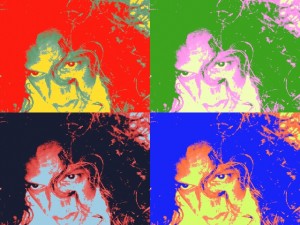
Interesting NPR Story on Perception of Skin Color
You can check it out here. The gist is that people who voted for Obama tended to think of him as lighter, those who didn’t tended to think of him as darker. This correlated to political ideology to a good degree, but the correlation was even tighter along the lines of the reported perception of his skin tone determined by altered photographs which the respondent deemed most representative. It’s fascinating.
But is it surprising?
What do you think?
(I hope to write on this more, but it’s bedtime in LA!)
The Black Body Release Party and Readings
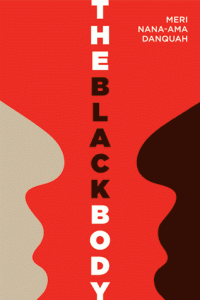 The Black Body Anthology is coming out on the 1st! I’m one of 30 essayists included and it’s pretty great company! Check it out on Amazon or the Publisher’s website. But you can truly find it everywhere, I think. Also come to the reading on the 10th @ Skylight Books, if you can. All the info is listed on my gig page.
The Black Body Anthology is coming out on the 1st! I’m one of 30 essayists included and it’s pretty great company! Check it out on Amazon or the Publisher’s website. But you can truly find it everywhere, I think. Also come to the reading on the 10th @ Skylight Books, if you can. All the info is listed on my gig page.
As the President visits the state, concern for the children…
Fox “Glee(fully)” addresses Mixed Race
Fox is an easy target. It’s fairly obvious the cable channel has a significant anti-Obama bias. But I heard the entertainment division is giving Wanda Sykes a late night talk show, making her the “first black lesbian late night host,” even if it is on Saturday night only against SNL. I’ll admit I was one of those who laughed when Bill Cosby dissed her at the 2003 Emmy Awards [another perspective from Michael Eric Dyson], but I’ve since come to like her for her activism and her television appearances. Maybe it’s another tactic for the entertainment division using blacks to get an edge. (Remember Martin, Living Single, and New York Undercover on Fox vs. Must See TV on NBC or all those other 90s shows, The Sinbad Show, South Central, Moesha, In Living Color, and Roc? Honestly, I can never say any of those shows were ever must see for me. But it was a remarkable era for black TV.) And, in full disclosure, my cousin from the black side of the family does work for Fox and I’ve always felt her to be progressive, politically and culturally.
Though I missed the black era of Fox-TV some of my guilty pleasures have been those David E. Kelley on Fox shows like Ally McBeal, and Boston Public.
Now, I bashfully cop to a new show on Fox in a similar quirky mold, Glee. (I’m a sucker for quirky comedy, kids overcoming the odds through music, plus huge vocal harmonies and a little camp.) Mr. Kelley has nothing to do with this one, though. If you’re a fan of any of his work, you’ve definitely seen a lot of quite progressive diversity represented. This new show, though it shares some of the absurdist bent, seems to have a strange thing for mixed race people. One of the characters is I’m guessing, Japanese and Caucasian – last name Tanaka. But now two episodes in a row they’ve alluded to either the instability of parents of mixed race kids or the genetic viability of mixed race kids altogether. I know it’s a comedy and it’s had some bad word of mouth for it’s mean-spiritedness, though it also had a very sweet coming out story of a gay teen.
So, maybe I’m just being sensitive again, but I’m just wondering is this a common sort of perspective in certain parts of the country? Check out these two 30 second clips. The piling on two episodes in a row is a bit much for me. What do you think? And, for fun, do you think it’s an anti-Obama directive from on high? (For fun, OK? I’m not a conspiracy theorist. Really….)
John Hughes is Dead
How funny to be sitting in a coffee shop in the Valley on the day John Hughes died. I don’t know if all those eighties films were set in the Valley, but it feels like it. In my teens, the Valley was a slightly more exotic Irvine — which made it even more detestable. I’d moved up to UCLA, just 17 a few weeks earlier, and there were a few new friends from over the hill with ostentatious style that made my post-preppy/mod self cringe.
“Sixteen Candles” came out when I was 18. I liked “Breakfast Club” a lot better. And I hated that the Hughes Machine corrupted my precious Psychedelic Furs by inducing them to re-record “Pretty in Pink.”
But as cool as I wanted to be, I was swept up in the misfit romance of those films. Part of me wanted to be the dick that Andrew McCarthy or James Spader portrayed in those films. Part of me felt like Jon Cryer or Molly Ringwald. Really there was no one that really looked like me in those films, but it looked enough like the world I’d moved in just a few years earlier.
Then as the eighties and nineties moved ahead, I got to meet Jon Cryer one embarrassingly drunken night and Molly became a friend for a while after she’d seen my band play a few times. (Interesting that I never met the dicks.) My life really blended with the fantasy world of the Hughes entertainment. I was a geek who made it, at least modestly, to live the dream of making music, a beautiful partner, and seeing my friends do well. John Hughes films were kind of an ad for the geek dream. Even when it seemed kind of racist with Long Duck Dong, he gave kids who didn’t fit in hope. (Though I can’t really speak to authoritatively because I don’t remember a really stereotypical black character in his films.)
So somehow as the author of those dreams dies early (is ‘auteur’ appropriate?), it gives me an odd sadness. I’m sitting in a Coffee Bean. There are laptops everywhere. And we’re all a little out of the mainstream as we sit in this chain café. We all have modest dreams or even huge ones. Some people are dressed a little ostentatiously. I’ll never really understand Valley fashion. I’ll never understand why anyone would choose this place to live. (I’m house sitting and homeless at the moment…typing on my new MacBook Pro…It’s a strange world.)
How long do we have to dream? That’s the sadness. But I like the quirkiness here in this coffee shop and in the people passing by. John Hughes made it a little safer, or at least a little more imaginable for us modest misfits to dream. Thanks.
Two Walls
Two walls. Two acts of violence. I can’t remember what precipitated the violence, but I do remember that race mattered. I tore down the pinups of the J5 from my wall. Dad punched holes through the Angels.
Less than a year after the original moon walk, I saw the Jackson Five play a concert at the Los Angeles Forum. I wasn’t even five. At least that’s how I remember it. Maybe it was when I was 7 that I first saw them there, but it seems like it was twice. And I remember seeing a change the second time. Michael was bigger. His moves were wild… adult, I thought. He was about to be 14. Maybe it was too sexual for me.
Sex and blackness. I was ambivalent. I was barely seven! But I was already aware of my father’s libido and my inadequacies. Somewhere in my Oedipal/Castration Anxiety stage of development, he made me aware.
I don’t know what caused it, but I remember one evening, slamming the door to my room and ripping down all the photos of the Jackson Five.
A few years later we’d moved to Irvine. We’d bought a house and were living the suburban dream that the Encino Jackson’s epitomized. I was all about the Angels, and really Farrah. One day my dad, angry at something or another, started screaming at me and punched holes in the Charlie’s Angels poster above my bed. It was a slanted roof, so I was stuck there, on my bed, beneath the torn paper and falling plaster. He was shouting something like, “Do you love those white girls more than me?”
Michael Jackson and Farrah Fawcett represented two parts of my life I never could embrace without some sort of interference. If only Michael had stayed black, maybe I would never have had any issues! Ha! But he was a model of some subliminal influence that indicated with talent and a non threatening persona you could be loved. There was even a boyish sexiness that you could use with the girls and especially the older women, to get ahead.
Farrah represented carefree beauty, seemingly free of any calculation, just the privilege of beauty.
I really stopped caring about either Michael or Farrah by the time the first Van Halen record came out. Then, when I came under the influence of The Clash, around “London Calling,” they seemed to be hopeless artifacts. I mean, I respected the production of Thriller. I dug that Vincent Price and Eddie Van Halen were on the record (though I was suspicious of Eddie in my New Wave ethos). I even got into the ambition and emotion of “We Are the World.” But the stuff never moved my soul the way the Smiths were, or the old school R&B of Marvin and Curtis, or Billy Bragg, Bob Dylan and Joni Mitchell.
But I started to bawl when I heard “We Are the World” followed by “Man in the Mirror” driving home from a poetry gathering in Pasadena Thursday night.
There was heart and empowering ambition beneath the glitz of both Michael and Farrah. The world responded to the glitz. It seems like they both wanted to express more. Yet the high of the glitz seems to be what destroyed them both. The desire for adulation and the compulsion to run away from the falseness it imposes, to angrily reject it, is cancerous. It can break your heart. Both of these performers tried to break walls. People wanted the pinups intact. How does one make peace with that? How does one walk in the world knowing who he or she is, while knowing that people are reacting to only a piece of you? How do you accept the superficial praise and deflect the shortsighted damnations with grace?
2nd Mixed Roots Film & Literary Festival – 06/13/09 – Japanese American National Museum
Happy Loving Day
I offer you this in celebration of the Mixed Roots Festival and the Lovings of Loving v. Virginia, the case that forever abolished anti-miscegenation laws in the US in 1967.
It’s something I did in the mid-nineties. It’s kind of silly with it’s Rolling Stones references, but also a lot of fun.
Hope to see you tomorrow, June 13th, at the Festival.
[audio:http://groovyacousticsoul.com/organic/samples/05_Various_Catalog/Songs_to_License/Lucky Mingus Demos/11we.mp3]
or add it to your cart and shop for more Jason Luckett music here.
WE*
I am the future
I am the past
I am the baby that you never had
Product of love
Raised in confusion
Not so much mine
But your illusion
Apartheid
In my life
Love is the solution
What about the children?
Don’t be chicken
We are what we are.
What’s so right within the white?
What’s so right within the black?
We all have organs
We like to use them
Gene pool mix—some brown will be the fusion
Down by law
Down by culture
One day
There’ll be no other
Miscegenation
Long gestation
We are what we are.
We are African American European Asian sons
Politically incorrect, embracing every one
And loving and sexing
And sex and sex and sex and sex and
Look at me!
We are what we are.
(Repeat first verse)
Jason Luckett, © 1996 Lucky Masala Head
*Lucky Mingus was the name of the band. It lasted about 6 months with a revolving cast of Jim Doyle, Rob Ladd, and JMD on drums, Wil-Dog Abers (now of Ozomatli) and David Sutton on bass, and Jebin Bruni always on keys. This recording is Jim, David, Jebin and me with Danny Brown producing.
I was heavy into my Charles Mingus period and was trying to add a more collective and historical vibe to what I was doing. The best historical thing here is the bass line which is inspired by a 70’s glam band far on the other end of the spectrum from Mingus…also a little nod to the Rolling Stones… Very little Mingus…
The Black Body
I’ll have an essay in a new anthology to be released on October 1, called the Black Body. You can preorder it now on Amazon. I’m not yet famous enough to be listed among the contributors, but my essay will be right there in the first three along with Innaugual Poet, Elizabeth Alexander! Very exciting!
Texas Border Patrol
My mother’s family came on the Mayflower. My father’s on slave ships, then mated with those who were here before Columbus. And TBP checks my trunk and asks if I’m a US citizen.
Vin Diesel’s Multi-Facial
I’d always heard of this movie, but had never seen it. I couldn’t find it on Netflix, but found the whole film on YouTube.
httpv://www.youtube.com/watch?v=_YszYwOyAfw
Ernie Barnes 1938 – 2009
I always loved his work. It reminded me of my Los Angeles childhood, the beautiful freedom of house parties where I’d run around playing hide and seek, with Chuck-a-luck, Chris, Leslie and Jossie. The adults danced, philosophized, and celebrated this community, largely a black one, though Mom and us kids were a lovely part of the simmering stew.
And how could you not hear Marvin Gaye when you see his work.
eHarmony Ad – Traci and Jeremy an Interracial Couple
I saw this this morning on ABC:
httpv://www.youtube.com/watch?v=2k28rM-pGrU
I thought it was great, though I had one knee jerk reaction: “Why does she have to be crazy?”
Update: For some reason the original ad isn’t available on an iPhone, but here’s another version, interestingly without the “crazy” comment.
httpv://www.youtube.com/watch?v=EfLRT64RXlw
Sorry I’ve been away, but you’ve got to read this!
I’ve been in “albumland” and trekking around India! But a friend of mine posted a link on her Facebook page and I have to share it. It’s a story in Newsweek about a black family that adopted a white child and the post racial implications.
Hopefully, I’ll get back to more regular entries soon.
“Prom Night in Mississippi”
Did anyone see this at Sundance? I’m really curious to hear about it. It’s a documentary on the first integrated prom at a high school in Charleston, Mississippi that occured in 2008. Yes, that’s right, no typo, 2008! And only because Morgan Freeman offered to pay for it if they integrated the dance.
Tell me about it and let me know when I can see it, if you’re involved.
(Yes, I know, I’m just reading the Sunday Times on Tuesday morning, but I’ve been busy finishing my album mixes and writing a couple things that I’m really excited about!)
UPDATE: I got a note from a friend down in MS, and he told me that it’s actually two different high schools. Check it out the LA Times article anyway. It’s a really interesting discussion.
Wow!
I always felt American. I’m the descendent of Pilgrims and slaves. I know the White House was always supposed to be the People’s House. Now I really feel it. Everything is possible.
Repeal Prop 8 March in Los Angeles
On Saturday I participated in the nationwide protest against the passing of Proposition 8. I’m not a fan of the initiative process. I think it leads to the tyranny of the majority that our Republic was designed to avoid. And we could argue all day about that, but most of the Civil Rights that were secured in the 20th Century were not by popular vote, but by court cases and legislation that was designed to protect minority rights.
So I’m bringing it back to the outlaw lovers that were my parents and Barack Obama’s parents, and anyone of “mixed race” whose parents were together before 1967. Procreation is not the primary function of love, nor marriage. But marriage is certainly a nice symbol and structure to nourish love and a family.
The “mulatto moment” for me Saturday was the echo in the story of a woman, born of a lesbian mother, but raised by two fathers, committed for over 35 years, yet just married this September. She spoke of the normalcy and security of her family, yet also of the existential invisibility. It reminded me of the days when I was expected to pick one, when asked for race or ethnicity. And her ability to share her experience resonated with the gift I feel I’ve been able to use by moving in a black world or white world with an implicit acceptance. The idea of that “gift” got me excited about Barack Obama initially. I decided I needed to vote for him when I saw this so fully articulated in his speech on race.
The gift of empathy or the ability to listen and communicate with inclusive respect aren’t the sole purview of hyphenates, but we do have to start practicing these things maybe a little earlier than people in a homogeneous home.
Oh, and now I want to start writing about the “mutts like me” joke Obama made in his first press conference. I loved it! But, I think I’ll have to leave that for later.
P.S. I added some photos and captions to my election night entry. I hope I’ll write more on that sometime soon.“We’re a Winner” – Curtis Mayfield (1967)
Had an urge to listen to “Curtis Live” this morning. This song was originally done by the Impressions in ’67. I love the live version from 1971. Seek it out.
We’re A Winner – Curtis Mayfield
We’re a winner and never let anybody say
Boy, you can’t make it ’cause a feeble mind is in your way
No more tears do we cry
And we have finally dried our eyes
And we’re movin’ on up
(Movin’ on up)
Lord have mercy
We’re movin’ on up
(Movin’ on up)
We’re living proof in all’s alert
That we’re two from the good black earth
And we’re a winner
And everybody knows it too
We’ll just keep on pushin’
Like your leaders tell you to
At last that blessed day has come
And I don’t care where you come from
We’re all movin’ on up
(Movin’ on up)
Lord have mercy
We’re movin’ on up
(Movin’ on up)
Hey, hey
We’re movin’ on up
(Movin’ on up)
Lord have mercy
We’re movin’ on up
(Movin’ on up)
I don’t mind leavin’ here
To show the world we have no fear
‘Cause we’re a winner
And everybody knows it too
We’ll just keep on pushin’
Like your leaders tell you to
At last that blessed day has come
And I don’t care where you come from
We’re just go move on up
(Movin’ on up)
Lord have mercy
We’re movin’ on up
(Movin’ on up)
We’ll just keep on pushin’
We’re a winner
Lord, baby
Everybody, hey, you know we’re movin’ on up
Wow
I just got in from the celebrations here in Nevada. Wow. I’m just completely blown away. My first calls after my mother and sister were to my elders. Septuagenarians, Octogenarians, who never thought they would see this day. I spent the day poll watching at a Baptist Church in the ‘burbs of Las Vegas, watching children come along with their parents who were casting votes for history. No major shenanigans ensued. I was there to check out who actually voted. Then we went out to ask those who hadn’t shown up to come to the polls. More with photos tomorrow or Thursday. Now it’s time for sleep and to pick up that paper in the morning, of which I’d dreamt vividly just a month ago. I almost relaxed, but I’m glad I came out here to put in the work!
Yes we did.
Here are a few more election photos:
Language again…
So I just sent out an email to my music list describing the wedding of a couple friends. My reference to them was to celebrate their marriage, but because I’m used to describing gay couples as partners, that’s word I used. But the point is that they’re husbands to each other. My friend duly corrected me.
Homeboys and Drive by Shootings
Racially tinged language is fun!
A 10 year old interviews Joe Biden (who explains accurately what the Vice President does as opposed to his counterpart on the GOP ticket) after which the youngster proclaims him to be his new homeboy. It’s so sweet!
httpv://www.youtube.com/watch?v=eW5X1eaozxQ
Then there’s more John McCain. He said he admired Obama’s use of language and asked us to parse it in the final presidential debate. Here he says that “the people are the victims of a drive by shooting” in this economic crisis. Should we parse this, John? (It comes in at about the 6:20 in this clip, but watch the whole thing if you want to see him talk about spreading the wealth around himself, or get caught in other inconsistencies.)
httpv://www.youtube.com/watch?v=Y_9qs0T3KhE
Colin Powell may believe that Mr. McCain has not a racist bone in his body, but he’s consistently making either extroadinarily stupid statements, or is in fact a keen user of what was known as the “Southern Strategy‘s” language. (I object to that term. I agree with Frank Rich. It’s insulting to the South to think an election can be won by appealing to the worst in human nature. I’ve got a good chunk of family down there, white and black and I think we’re all smarter than that!)
At least he didn’t say, “‘that one’s’ you-know what.”
“We’re going to spend a lot of time and after I whip his you-know-what in this debate, we’re going to be going out 24/7,” McCain said.
Context: he’s talking about spending time in battleground states with Sarah Palin after Wednesday’s debate with Obama.
Language use: abysmal.
Day Two
As I left the house this morning I wondered if my post yesterday was disparaging in any way. I laugh at myself all the time. I always have a counter argument spinning in my head. Usually the optimist wins out. But when acknowledging the “red meat” of our touchy feelie Camp Obama meeting, I don’t know if it came across as what it really was. It’s a true example that Obama’s campaign is not about him, but us. The McCain camp says it’s about country first and here we are in this camp talking about ourselves as individuals first before policy. But look at that: We’re talking about how in articulating an individual story we can connect ourselves to other individuals, community and country. It’s not about heroes. It’s about using honest communication to create bridges. And it’s not an others be damned sort of individualism. It’s more of a self-actualized sort of individual citizen. In fact one of the sections in the training manual is “Respect, Empower, Include.” What could be more American and patriotic? OK, so my working title for yesterday’s entry was “Fearing the Kool-Aid…,” and I sound like I’ve drank it, but I really believe in this stuff. I think the the failings of America has been in times of disrespect and exclusion. Unfortunately, we have a history of double-speak, where we’ve espoused these ideas of every man being created equal, and yet made second class citizens of different racial and ethnic groups consistently in our history. The groups change, but the divide remains familiar.
So this is what gets me about the McCain-Palin squad. McCain says on one day about Barack Obama “I have to tell you, he is a decent person. And a person that you do not have to be scared as president of the United States.” Then has concurrent ads running saying he’s “too risky for America.” Which is it? (Check out the talking points discussed here from Time: In Battleground Virginia, a Tale of Two Ground Games.)
Then you have an invocation at a McCain rally where the pastor says: “I would also pray, Lord, that your reputation is involved in all that happens between now and November, because there are millions of people around this world praying to their god—whether it’s Hindu, Buddha, Allah—that his opponent wins, for a variety of reasons. And Lord, I pray that you will guard your own reputation, because they’re going to think that their God is bigger than you, if that happens. So I pray that you will step forward and honor your own name with all that happens between now and Election Day.”
What? One God bigger than another? A monotheist talking about more than one God?? I wrote a satire called “The Art of Jerry Boykin” after the Abu Ghraib revelations, that barely altered the quotes of several on the right essentially saying “My God is bigger than yours.” I thought it was irrelevant by now. Alas, no.
And I know I’m getting way off the subject of Mulatto Moments. But maybe not. The positive power of a mulatto moment is hearing something shocking then having the opportunity to share your experience from a position of inclusion. The hope is that whether or not you can sway the offending position, you can at least create a space where respectful dialogue can happen, where the division between an arbitrary “us” and “them” can be minimized.
The Art of Jerry Boykin
You’ve lost your morals
You’ve lost your values…and
My God is bigger than yours
My God is bigger than yours!
My God is real
Yours is an idol
We are Christians and Jews
The enemy’s a guy called Satan
They hate us because we’re a Christian nation
One nation under God
On crusade to stamp out all Evil
Let’s roll, let’s roll, let’s roll
I’ve no trouble saying I’m born again
And you’re with me or you’re against me
Not men, but God, put this man in power
We’ll win in the name of the Lord (Jesus)
(Jesus, we’ll win in your name)
We’re in the Army of God
In the house of God
In the kingdom of God
And we…
Have been raised for times like these
[audio:http://www.jasonluckett.com/peacepak/jerry_boy.mp3]
The Tender Balance of “Us-and-Other”
Today was my first day at Camp Obama. I’m sure some would wonder why it took me so long. Truth is I’m a cynic. I’d rather imagine the good in people than face people and be disappointed. It’s a fear. And like all my fears, I eventually get around to the confrontation. I think of it as my job. I’m a singer songwriter because I was afraid to talk. If I could get out 3 coherent minutes of an idea out, I thought I’d remedy it. But I digress….
The gist of today was we’re in the last days of the campaign (not the Palin-esque Last Days), so what we have to offer is our personal stories. We’re not going to wow people with policy at this point. Argument is a waste of energy. What we need to do is to motivate the already inclined to act. So (and here’s some red meat for the haters) the first half of the camp was basically an autobiographical sketch workshop. The task was identifying a personal challenge, explaining the choices we made because of it, and the outcome. Yes it was Obamacentric in that we all had made choices to come and volunteer for this campaign. And it had to be something that could be communicated in 120 seconds.
So I felt really esoteric when it came to my story. I mean I write volumes about this stuff. Our biographies overlap again and again. I have millions of challenge>choice>outcomes that led me here.
Few kept it to 2 minutes – it’s hard with emotional subject matter. But I like assignments, so I tried. I offered the “nigger” story.
I was 5 and it was the days of Richard Pryor on vinyl. My dad would call us “little shit asses.” So you can’t blame me for being a foul mouthed kid. I called a kid “nigger.” I got beat up. My parents explained the word to me and it began my journey into history and the language. In Irvine a few years later I got beat up and called a “nigger.”
My corporal identity has allowed me to be perceived as oppressed and oppressor, included or other. I focus on the inclusion in order to bring empathy toward the other for my peers. I am the derided other, yet I’ve been included as family. So take that a step further and include those for whom we don’t have a natural affinity. Let’s understand their stories because they’re not dissimilar from your friend, me.
I feel like I’ve been able to do that through my music, it’s actually my mission. I tried to do this a little through politics in college, but the pressure ate me up. I said it was the “no Red States/Blue States” speech that got me, but really it wasn’t until the race speech (my Julia Moment) that I was in. It’s that ability to speak in shared experience that I believe is Barack’s primary strength.
So is it all about race for me? There are many biracial people out there I wouldn’t trust with my country. Not many people would I trust with my country. It’s what one does with his or her experience that moves me. Obama does what I’d like to do in a larger forum. I don’t agree with everything he does. But that’s the great part about the conversation with those that are simultaneously “us-and-other.” We see and can represent the humanity of those with whom we may differ from a rather unique perspective. And if we’re practiced, we can hold this conversation in a really calm fashion.
I felt a little cold recalling this story to the group. Name calling and childhood beatings seem rather existential when you’re talking with people whose narratives include present battles with healthcare and unemployment. But it’s this essentialist tension that gives me the sense that Barack Obama has the skill set to hear the stories that will lead to effective leadership. I’m not looking for an affective President, I’m looking for an effective President. Affect is a large part of effective politicking, but something about the navigational balance of being “us-and-other” can blunt that when we’re trying for effective dialogue. We’re not going to get a lot of red meat from Obama, but we will get a reasoned, educated and respectful discussion.
Daydream Obama 08 Remix-Rewrite
Carry us up to be received
We’re drinking coffee at 6 a.m.
Newspaper’s trying to scare me to death
But I won’t be pulled (polled?) into fear
Tears rise as I daydream
Will Martin’s Dream soon be fulfilled?
Can you feel?
Carry us up to receive
Cos despair as fate is nonsense to me
Sun warms us through our windows
But you and I must go outside
With knowledge from real conversations
We will act in work and song
Can you feel?
You’re not alone!
Can you feel?
Carry us up to believe
That words of peace stir collective souls
That we will be moved by non-violent minds
That this “change” will resist nostalgia
Tears rise as I daydream
And I begin to smile
Can you feel?
You’re not alone!
An update for this amazing day! Recorded this afternoon. (That’s Est Nyboer on the drums.)
OK, I’m obsessed
There’s no other way to say it. I’ve gone over the top. I’m digging into these Mulatto Moments so much that I saw this – Reinventing Gap: The Second Coming of Khaki – on the New York Times homepage and thought it was going to be a story about racial Khaki beige. I mean, I worked at the Gap in my youth. I should’ve clued in. But, no. A friend of mine has just hipped me to mulatto.org, which I’d avoided checking at all until I wanted to make sure I had the URL right. Oh, no… Good thing I’ve got to go to work now.
Isaac Hayes and Posters on the Wall
I’ve just written a piece for an anthology on “the Black Body” where I described the posters of The Who, Queen and Led Zeppelin on my childhood walls in Irvine, CA. But today I was thinking of Isaac Hayes and stumbled across this picture and remembered it hanging on my wall at some point. I’m pretty sure it was pre-‘burbs. But it was nice to remember that there was a time when black men held my imagination in the same way that curly-headed white men did in my childhood imagination.

A few years ago, I rediscovered the Black Moses album. I don’t know what drew me back to Isaac Hayes. My father and I share the middle name “Hayes,” so I guess he was never too far away… The story I always heard was that Pops was named after Roland Hayes, the great tenor who’d stayed with our family in Mississippi when there were no hotels for blacks. But after reading the Black Moses disc liner notes, I determined that Isaac Hayes had to be my uncle. Dad and Isaac both had a mother named Eula and the father was a wandering sort in the same Tennessee and Mississippi area. More than that, when I was a kid I always thought my dad had a lot of Isaac in him. Maybe it was because he’d mouth the words along with Shaft or something like that. Dad was definitely that cool, fashionable, player. But my head was completely screwed up by Isaac Hayes’ Penthouse magazine layout that I found in my dad’s stash.
I think what I like most about this photo is that is seems so organic. Isaac Hayes was known for his sexy bald head, muscles and precious metals. But here he’s in wool and cotton, his arms are open for embrace, he’s looking towards heaven beneath those shades. Sure it could be just a jokey, almost blasphemous visual pun. But as a kid that was the sort of image I wanted of my dad, not the flash, but the open, loving spirit. They were both imperfect men, and the flash out-shined some of the substance. But both Isaac and my pops inspired me to open my arms to embrace the large universe they showed me, a universe that transcended the humble beginnings of sons of a Eula with wandering fathers.
Stir It Up for Barack!
A few years ago I’d just turned 21 and had this mulatto moment. I share it with you today on my birthday. I recorded this at Kulak’s Woodshed in North Hollywood.
I’d like to encourage synergy with the Obama campaign, especially around the acceptance event in Denver on the 45th anniversary of Dr. Martin Luther King, Jr.’s I Have a Dream speech, so I thought I’d put this out. I have a vision that we can get Diana Ross to mash in “Ain’t No Mountain High Enough” with my “Stir It Up”
Then I’d like to sing Daydream which was written hoping for a day like this 10 years ago, when hope seemed more distant.
[audio:http://groovyacousticsoul.com/organic/samples/01_Albums/APFH/02_daydream.mp3]
Right click to download Daydream
[audio:http://groovyacousticsoul.com/organic/samples/01_Albums/Living_Room/09 Miracle.mp3]
Right click to download Miracle.
Also I’m thinking that it would be nice to have some supporters cut videos to Daydream and Miracle using clips highlighting the issues that we hope to move in positive ways. The lyric for Daydream talks about a day when Martin’s dream is fulfilled. With all that’s going on in the media and campaigns, we know that is not going to be unequivocally August 28, 2008. But there is hope!
—
daydream
carry me up to be received
we’re drinking
coffee at 10am
newspaper deaths
thirty years, one day
a folk singer says i ain’t scared
and tears fall as i daydream
of martin luther king fulfilled
(can you feel…?)
carry me up to receive
‘cos despair as fate is nonsense to me
sun warms us through our windows
but my friend and i must go outside
with knowledge from these conversations
we must act at least in song
can you feel?
you’re not alone!
can you feel?
carry me up to believe
that words of peace stir collective souls
that we’ll be moved by nonviolent hands
that my passion’s not nostalgic
and tears rise as i daydream
and i begin to smile
can you feel?
you’re not alone!
can you feel
you’re not alone!
can you feel…
can you feel…
you’re not alone!
you’re not alone!
(c) 1998/2002 Jason Luckett
When you’re up 45 to 39 you’ve got to be in trouble!
Unfortunately, this is just a quick little note…I think. I’ve been writing music and working on an essay I’ll tell you about later. Then there was the tour which exposed me to a lot of ideas, but the pace was a little too frantic to keep up. Anyway, what inspired me to jump on this evening is not really a mulatto moment at all, but a media moment. And I think it also speaks to some of the comments that I’ve received in my absence. It’s the NYTimes article today Poll Finds Obama Isn’t Closing Divide on Race.
I chose not to publish a couple comments from people recently because they felt too negative and inflammatory. But the gist of it was that the articles here were all about race and race isn’t or shouldn’t be the issue in the presidential campaign. Well, race and culture are probably going to be the topic on a blog subtitled “Mulatto Moments in ‘Post Racial’ America,” so you are probably in the wrong place if looking for a “colorblind zone.” But one of the problems with this election is that it’s being talked about in racially divisive ways. A funny thing, Jon Stewart said that the proper response to the New yorker cover that is causing so much noise should have been:
“Barack Obama is in no way upset about the cartoon that depicts him as a Muslim extremist. Because you know who gets upset about cartoons? Muslim extremists! Of which Barack Obama is not. It’s just a fucking cartoon!”
But I actually liked what Barack had to say on Larry King in response to the smear e-mails and cartoon:
“One last point I want to — I do want to make about these e- mails, though. And I think this has an impact on this “New Yorker” cover. You know, this is actually an insult against Muslim-Americans, something that we don’t spend a lot of time talking about. And sometimes I’ve been derelict in pointing that out.
You know, there are wonderful Muslim-Americans all across the country who are doing wonderful things. And for this to be used as sort of an insult or to raise suspicions about me I think is unfortunate. And it’s not what America is all about.”
And I think that’s probably more to the point than Stewart’s comedy.
Back to the Times today… It was also on AOL’s front page as the first item of news. The Times article says that “More than 80 percent of black voters said they had a favorable opinion of Mr. Obama; about 30 percent of white voters said they had a favorable opinion of him.” What they could’ve said right next to that as their graphic indicates, only 35 percent of white voters have a favorable opinion of John McCain. And as you can see, the graphic list Obama’s “white approval” at 31% to McCain’s 35%. A four percentage point difference and AOL says New Poll Reveals Trouble for Obama. Huh? What was the white approval rate for the Democrats in ’04 as opposed to the Republicans? Historically Republicans seem to win the white male vote, so I’d venture to say the percentages were about the same. And blacks tend to vote Democrat, so while 80% is high it’s probably not much more skewed than Irish Catholics for Kennedy, Greeks for Dukakis, etc. So why did this inspire an “Is America Ready for a Black President?” poll on AOL? It seems someone is looking for a racial hook.
Then you get the results as of 11pm PST on Wednesday:
Do you think America is ready for a black president?
No 59%
Yes 41%
Total Votes: 403,336Are you personally ready for a black president?
Yes 53%
No 47%
Total Votes: 393,646How big a role do you think race will play in the outcome of the presidential election?
Major 68%
Minor 28%
None at all 4%
Total Votes: 309,373What’s your race?
White 77%
Black 9%
Other 6%
Hispanic 5%
Asian 3%
Total Votes: 295,493
With the caveat:
Poll results are not scientific and reflect the opinions of only those users who chose to participate. Poll results are not reflected in real time.
And the New York Times poll? They asked their questions to 1,338 white people and 297 black people.
How many people read this article? And then how many got past the paragraph three where Obama gets “about [a] 30%” favorable rating from whites to the paragraph where McCain’s favorable rating is only 35%. Oh, that’s right, it’s never mentioned in the article’s twenty-seven paragraphs. But if you do click on to page two of the online article you’ll see mentioned that “Over all, Mr. Obama leads Mr. McCain among all registered voters by 45 percent to 39 percent.” in paragraph twenty.
Obama leads 45% to 39%. That screams racial trouble! Let’s put it on the front page. 1,796 adults have determined that our world is a mess!
Race needs to be discussed. Let’s just please discuss it in context and in non-alarmist ways. Be honest, be angry, but please be reasonable. And I suppose you could say I missed the point of the NYTImes article because it was really about how black people think race relations are worse than white people see it. Interesting news… There must be trouble for Barack Obama. But it’s not coming from the data in this poll.
Jason Luckett – 04/19/08 – The Neighborhood Cup
Slips of the Tongue and Things to Chew
I had a rant the other day – when it was the Che Guevara/Obama supporter controversy – and I knew it would be impossible for me to ever be a mainstream politician. I give a buck to the woman selling the Communist newspaper outside the lefty folk singers’ shows. And I’ve bought the bean pie and taken the newspaper. Some of the stuff I read resonates at times, but mostly I’m excited that people are fiercely passionate about questioning the status quo. It may not make sense to me. And there’s enough contradiction in all these dogmas, from communism to religion to the “American Dream” to fuel ironic monologue’s long after the sun dies. But it’s committed work. And the more this poor guy misspeaks, the more I believe in him.
Barack Obama is getting caught in so many mulatto moments, creating a national mulatto moment, and making clear that sometimes in those mulatto moments of multi-lingual encounters, we fall prey to the language that we suspect our listener can hear. Those are the uncomfortable moments when you let a cultural offense slip by and then find yourself in a situation where you’ve said something in a way that could be interpreted as offensive. But you want to avoid the time it takes to deliver “Barack Obama’s Speech on Race” which may or may not be received. So you figure your friends know you’re not elitist, or racist, or sexist and you let it go in the moment. I mean, you probably figure, I’ve spent literal years of my life trying to deconstruct bias in an effort to foster community and understanding, in conversations with lovers, family members, in public, in art…. I’ll just let this one go. Then someone, who hasn’t asked you what you meant by your “gaffe,” decides to interpret it for you. This person shapes it into something that fits his/her world view or aim. Then it’s turned against you.
So a “typical white person” becomes a racist remark, when in fact a “typical person” of any background in America may have the same reaction as Grammy Dunham, if you believe computer test simulations. And expressing that people cling to the things that they have left to empower them becomes an elitist observation, or a borderline racist appeal when Howard Dean said he wanted to bring the Confederate Flag bumper sticker truckers into the fold of the Democratic Party. All of these cases are situations where the speakers are trying to reach out, to say “I feel your pain” (or “their pain” depending on the audience). And yet the great pain feeler of the 90s reacts like the child of privilege when he claims no racial or ill intent in some of his statements recently. And even if you give the benefit of the doubt, to the intentions Bill or Hillary, or anyone else who thinks their “politically incorrect” statement is innocuous, a person who wishes to create real dialogue will acknowledge their words are legitimately heard differently by those from a different perspective.
In debate, I think the rule is to never give your opponent’s perspective any real credence. I prefer a dialogue between interested parties in life and in Government. Admit your mistakes, consider the different perspectives, and let’s move on. I kind of agree with Frank Rich from a couple weeks ago that it’s silly for the Dems to say that John McCain wants a hundred year war. Look at all these candidates’ long records and there’s no need to twist. Obama will be the most effective leader.
So, I got back into this electoral politics thing again…
Well here’s my religious thought of the day: God as a verb rather than a noun. I heard Chris Hedges float that idea the other day and I’m enjoying the chew.
The Truth About the Fact – 04/10/08 – Loyola Marymount University
Black Like Me
Prologue/Epilogue
Those reading this may not be surprised to learn that I wrote the bulk of this piece before Iowa and before Hillary and Bill’s backfired attempts to win over more Black people. The tide has shifted dramatically. Obama is now easily winning over 3 quarters of the Black vote in primary after primary, he now has the endorsement of rap stars whose “Black” credentials have never been questioned, and t-shirts with his face can be bought along Crenshaw Blvd along with bean pies, incense, and copies of The Final Call. Yet, I still feel ill at ease. Is this truly a willingness to embrace Obama and his particular Blackness? Or is it just a rejection of Hillary and a desire to get on the bandwagon now that backing him seems popular among Black people. Are we (if I am now allowed to use that pronoun) just being sheep or was all the dissension over Obama’s Blackness really covering a now-relinquished fear that a Black man could ever be elected president of the United States?
Barack Obama is Black like me, almost exactly in fact. Like Obama, I was born to a Mid-Western white mother and a Black East African father. Like Obama’s, my father was charming and gregarious, troubled and complex, a womanizer and an eventual victim of his own pride. Like his mother, mine was both naïve and worldly, loyal and steadfast. Born of a unique racial and ethnic mix, Barack share a unique heritage now at the center of questions about his ability to be a leader for Black Americans.
When Barack first thrust into the national spotlight at the 2004 Democratic National Convention, I felt something I’d never expected to transpire in my lifetime – an identification with a national figure who was Black like me. A shared experience with someone who now actually has a shot at becoming president of the United States of America.
I didn’t join Obama’s fan club, immediately donate money, or campaign, but I bought his first book and consumed it with the slow pleasure of one enjoying a rich, multi-course meal. Soon, I found myself reading any news or magazine article on the Senator that crossed my path, and placed a gorgeous picture of him on my computer desktop. In the black and white close up, he sits with headphones on, smiling and fully self-possessed, as he answers the questions of a local radio host. The look of self-possession was perhaps what motivated me to post the picture. I know how hard it is to come by, in a society that prefers dichotomies and simple opposites, for people with our set of contradictory backgrounds and multilayered complexities.
When the Chicago senator later announced his presidential candidacy, I didn’t even know that he would get my vote, but knew that I liked the man, the person. I know that I am proud to see a man with his self-assuredness, intelligence, and stated mission (to bring all of us into the full realization of this country’s state mission) – who is Black like me on a national stage. Unlike the “tragic mulatto” or sexy biracial vixen that are perhaps America’s most indelible images of their biracial citizens, Barack is unconfused and long over trying to be anyone but himself. He also embraces an African-American identity rather than standing apart and pushing forward a multiracial agenda that, prioritizes individual identity rights over a more fundamental and basic struggle for justice long overdue America’s “brownest” citizens.
What I did not fully expect in my quiet joy over Barack’s presidential run is that suddenly the Black authenticity of someone who is Black like me would be the subject of so much dialogue and debate in the mainstream media and Black community. Major commentaries, questioning his Blackness were written by Black luminaries such as Al Sharpton, Stanley Crouch, and . . . ., editorial cartoons and comedians joked about his shaky claim to a Black experience, and seemingly endless polls reminded us that Barack was challenged in beating out his major opponent – a white woman whose support from Blacks stems largely from a love for her white husband – despite the fact that his policies included things like ending welfare as we know it and putting into place trade legislation that helped to further deteriorate the manufacturing core that helped birth the Black middle class (not to mention policies that ravaged the economies of some Black-led democratic nations in the West Indies.)
When it first occurred to me to write this piece, I was weathering these discussions quite easily and congratulating myself for having come to a place where I was secure enough in my own identity, in my own place within Black communities and the multilayered African American experience to feel unfazed. I laughed along with the Daily Show’s “senior Black correspondent” who joked that “African Americans liked African food, African clothes, African music, but African people – not so much” and was not pleased, but not bothered, when I heard about Crouch’s piece, “Not Black Like Me” New York Daily News piece (11/2/06).
I could sympathize with those wanting to point out that a victory for Barack was not the same as one for someone whose ancestry and personal history fit into the predominant African-American story — that of involuntary migrants for whom slavery remains an indelible memory (or humiliating insult). I could understand why political pundits and commentators would believe that white America might be more comfortable with a Black man whose culture, language, women, and religion their own ancestors did not take direct role in robbing, raping, distorting, and denigrating. They were right, I knew, despite my disappointment in the media’s constant attention to this show of Black disunity.
But since that early barrage of articles and commentaries, there have been some chips in my own armor, leaving me angry and disappointed and less sure about how I (or should I) write about this. The lowest moment came when I wished Barack would win and then issue an executive order telling Black America to go screw itself. I was that frustrated by the apparent willingness of African Americans to turn their back on him. Perhaps, I should explain. In this country, few of us can walk into a room without one’s race being the first thing observed about them. Growing up one the white side of Dayton, Ohio, this was acutely true for me. My grade school was all white save myself, my sister, two older African Americans, and a group of siblings from a Vietnamese “boat” family. The neighborhood we lived in, our church, and vast majority of my organized activities through 8th grade were even less integrated. Overt acts of racism — hearing racist jokes, having racist epithets hurled at me, and seeing racist graffiti on playgrounds and bathroom stalls were regular occurrences for me.
My parent’s took us to a range of multi-cultural events and did their best to help us to understand and deal with these experiences. They revered the civil rights movement and used Dr. King’s philosophy as the model for how my sister and I should respond. They had a small group of African and African-American friends whose families we sometimes shared Sunday afternoons and dinners with, but there was no African community in Dayton to be a part of so to speak, nor were my parents really a part of the city’s African-American community. In this context, I drew my heroes, my strength, my willingness to forgive, and even my sense of self from what I knew about the Black civil rights pioneers who I learned about from Mom, Dad, our Catholic school’s slim Black history curriculum, and the local library.
To my knowledge, there were no slaves or slaveholders in our family’s background, but I still felt the slave’s pain and rejoiced in his emancipation. And, I could draw a straight line between the racial epithets, threats, and physical violence thrown at civil rights workers and my own much less intense day-to-day experiences. Neither the history of my Father’s people nor that of my mother’s German-Irish ancestors held the same relevance to me or provided the same sustenance. Hence, it was and is to this history I wanted to add my own story line and to the African-American people I determined my alliance. My personal life and my work, which is dedicated to understanding and reducing Black/White disparities in health outcomes, reflect this and despite my differences, I believe that African Americans rejoice and share in my successes.
Perhaps my genetic draw has made this easier. Like Barack, people rarely mistake me for another race and or even guess that one of my parents was white (unless they know that the other was African). Hence, the outward expressions of white racism I heard were largely uncomplicated by the “mulatto factor” and African Americans tended to see me as “one of them” before noticing the ways in which I was different. Yes, my teen and college days included my being questioned and sometimes left out for not being “Black enough,” but my larger experience has been that the African American community’s embrace is wide enough to include me and many others whose personal histories stray from its dominant narrative.
This is no doubt a legacy of our country’s “one-drop rule” but, beyond that, reflects a survival strategy, birthed perhaps on slave ships and auction blocks, when members of rival tribes chose to come to one another’s assistance rather than to watch another perish without offering aid. It extended to the offspring of involuntary unions between white plantation owners and black female slaves and to many civil rights heroes who were also not 100% African American. For example, the activist Marcus Garvey was Jamaican; the scholar, W.E.B. DuBois, was African, French and Dutch; the famous physician, Charles R. Drew, was African American and White; and the politician and activists, Adam Clayton Powell, Sr. and Jr., were African American, Cherokee, and White. The “Barack reaction,” however, has lead me to question just how many Black people really know this and to wonder whether or not African American communities really desire my allegiance, my skills and my commitment.
Yes, I know that things are different now, for a host of reasons too complicated to recount here, but I have grown troubled by the now-resurgent focus on whether or not Barack is Black enough. Troubled by who wins and what is ultimately lost in the process. Troubled by why the need to examine the “authentic Blackness” of some Black folks rarely extends to those with certain characteristics — such as being “true to the streets” or able to invoke the race card at the right moment (a la Clarence Thomas) — as if these were community-building, Afrocentric characteristics in and of themselves. Perhaps, Malcolm X’s contrasting of the “field” and “house” Negro is branded in the African American mind, and it will never trust those Black people whose success stems from “houses” to which most African Americans have been so long denied. Perhaps, however, it has forgotten that some “house Negroes” put glass and urine in the “Master’s” food and some “field Negroes ” literally sold out their brethren who attempted escape or revolt. More importantly, it must remember that achieving a brighter future requires not only a vision long enough to include the past but one wide enough to move beyond it.
Is it wrong to question where Barack’s allegiances lie and whether he is truly committed to the struggle of African American people? No. But, if we take this course, let us not start and stop the process with people like Barack. Let us begin with ourselves and then extend it to each and every person who asks for our money, our vote, our support, or our admiration — regardless of whether or not all of their ancestors were African american. And, PLEASE let this be a family discussion. Am I the only one embarrassed by the fact that for over two years now the media has been able to put forth little else about the African American impression of Obama than its anxiety over whether he is “Black enough” — making us appear superficial, divided, and (frankly) afraid? Yes, we can rarely expect a nuanced and complete portrayal of African Americans from the mainstream media but Black commentators, writers and others have provided plenty of fuel for this particular fire. My fear is that more has been burned in the process. What other people who are “Black like me” now find themselves feeling estranged, alienated, and cut loose from sources of strength, pride, and community – less willing to join in the collective work needed to build a brighter future for all African Americans? How many African American children have bought into the idea that Barack’s success can never be their own?
The Julia Moment – Obama’s Speech on Race
The easiest place to start is at the tears. And for me it was the mention of the white grandmother “who loves me as much as she loves anything in this world.”
I remember first really connecting to my black American self reading the Autobiography of Malcolm X while traveling in Europe. I was in from the beginning, along with the rage, understanding Brother Malcolm’s hatred of the “white rapist blood” within him even though the preponderance of “white” blood in me came from histories of love and directly from a courageous woman who moved across a continent and an ocean to marry a man who feared the social repercussions of his choice. And though Malcolm eventually re-evaluates his characterizations of the “blue-eyed devils,” embracing a multi-hued community of sincerity–a journey I joined in my reading–I was momentarily just as much with him when he proclaimed that the only thing he liked integrated was his coffee. I understood the history. Parts of my life connected viscerally to his narrative through my own experience and the stories both my father and mother told me. I was caught up in his intelligence and charisma. Ultimately I was inspired by his capacity for change and love.
My father’s generation have told me about the moment they saw Diahann Carroll on TV in her show Julia. She was simply a beautiful black woman, sans caricature, neither Madonna, nor whore. A woman.
When we talk of race in this country, particularly in this era, it is generally of tolerance, of how close we are or not to equality, of self-identity, or in platitudinous phrases and descriptions of colorblindness (“Love See No Color” [sic…and gag!]), of a post-racial society. We speak “people of color”–whose opposite, I guess, would be “people absent color(?).”
And I’ve heard all the justifications for black rage and white anger.
But in political dialogue I’ve never heard a self-identified black man, speak of the absolute love he receives from his white family, his complete connection to them, even as the nearly inevitable racial experiences create moments of tension within that primary relationship. This was my Julia Moment.
Most of my “friends of color” have had our moments when we said we’d never date a white person again. And I’ve been asked if that sentiment offends me, seeing that I must have some connection to my whiteness. How could a sentiment that I’ve adopted myself for a period “offend” me? During my time of self-segregation I discovered that cultural ideas were as jumbled and problematic in my limited community as they were in the larger community to which I belong by blood and experience.
That’s the complicated beauty of Obama’s speech from Tuesday morning. I cannot disown, we cannot disown the white, the black, the brown, the Asian, the native people of this land nor can we deny the legacies of what has happened in the past and what is happening now that creates division in our society. The “whole” experience, the identity beyond the hyphen that adds divisive distinction preceding the word American, is a world where we can hold the profound and profane in a single family.
I was my maternal grandmother’s first grandchild. She wasn’t happy with the idea that her daughter was marrying a black man. A year after they were, my grandmother and I started a love affair that would continue into my 30s. We’d hold hands at our favorite bench, looking out at the lighthouse, facing east towards old England, from where our ancestors came in the 17th Century. I usually sat to her left, so when I looked towards her, in the distance southeast was the land where some of my family was bought and brought to this country. Behind us was entire land that used to belong to a brown people and the coast where I was raised in the sunshine. Even further west is the island of Oahu where Barack Obama and I were born. And beyond that is the Philippines where my step mother was born and raised.
This isn’t a platitude or a list, this is our family. I don’t love everything that happens within it, we’re a complicated community, but the bond and the love is irrefutable.
(c) Jason Luckett, March 19, 2008
Definitions
I just sent out my first full blast out about this blog and one of the first dialogues got me to question of why people like me and Barack Obama “only considered and referred to as black” when we’re just as much white. Well, of course, that’s not going to be answered in a quick e-mail or blog entry. But a simple answer is: it’s the power structure. I don’t want to repeat myself too much, but a lot of it has to do with the color dynamic I wrote about in the ¡SÃ, Se Puede! entry a couple weeks ago. And it starts with the historic “one drop rule.” In the quick reply to my friend I came up with this: People are defined by others by what sets them apart, what makes them different from what’s considered the norm. People self-define by their source of power. The history of “passing” is about people claiming “white” because that gave the sense of power to elevate above the restrictions of segregation and prejudice. The converse of that is the idea of strength can also come from the triumph over adversity. Outside of racial identification you have people describing themselves as “survivors” over cancer or “(recovering) alcoholics” when they give up their addiction. So perhaps racial self-identification is predicated by the same factors. For light skinned Blacks there is a complicated layer because light skin, “good hair,” etc. often affords more privilege. So to remain engaged with the plight of the struggle for all to be afforded equal rights and opportunities, many decide to identify as Black. (Since I started writing this entry an interesting discussion was posted on the New York Times called Go Back to Black which examines the inclusionary history of the US African American community, but also the exclusion of that term and idea when it comes to Blacks from non American-slave descendants. Another interesting post on the subject comes from my friend Meri Danquah.)
So my preferred identification has always been bi-racial (after I took the term Mulatto to be derived from the Spanish/Portuguese word for “small mule” though some disagree with that etymology), because it acknowledged both the privilege and struggle that has come from either definition in either community. I want to be reminded of how individuals throughout the power spectrum perceive me and by not choosing an exclusionary term, and claiming the white and black, I acknowledge that I’m aware of the perceptions of power and welcome discussion that calls into question my participation in an oppressive system. Sometimes I’m oppressed, sometimes I’m perceived as the oppressor. Sometimes I oppress and sometimes I think that I’m being oppressed by an individual when it’s largely an unconscious act as a result of ideas formed under a White Male Patriarchy.
So where does all this lead us? It’s interesting that Barack Obama would identify as black, aligning himself with achievement against oppression, rather than more strongly identifying with the source of privilege in his life. I’ve read a few posts online saying that he’s not doing himself any favor by not strongly claiming the race of the blood family that raised him, but the reality of it all is that even people like my friend who wrote to me initially recognizes that people like me and Barack Obama are considered black before we’re even asked to identify ourselves.
I’ve often said the great privilege of being biracial is that people from various communities view you as included rather than other, then the biracial person has the opportunity to shed light on how one of the “included” can be treated when perceived as other. So today it’s still a very powerful statement to claim to be black when 1 in 15 black adults (including one in nine black males between the age of 20 and 34) are behind bars when distancing yourself from that classification may make your life easier.
So yes, biracial, with or without the hyphen suggests hybridity and duality, as an offensive idea to some as being aligned to a mule. And to claim that as my identity doesn’t even allude to what the sections of the “bi” are. But it invites questions which I choose to answer or not. I am black. I have an intimate connection to the diaspora that the term African-American was supposed to foment yet has somehow created distance. And I’m white, formed by the love my blood family and the community that I grew up in. Though it’s harder to say the later, because that same community that nurtured me also housed elements that violently reminded me that I was black. And I don’t think it’s a stretch to say every black person in his lifetime has been reminded at one inconvenient time or another that he or she was not part of the white power elite. And though biracial people may get uncomfortable reminders from their community of color, there’s not the same dynamic. Prejudice is prejudice, but racism and all the other so-called “isms” are indicative of an historic and present power structure. And even with a black President of the United States, blacks may still be nearly 45% of all prisoners in the US on “Day One” though representing only 13% of the US population. (Whites are 35% of prisoners, 70% of the US population, Hispanic are 20% and 12%. These are rounded figures based on a 2003 study by Human Rights Watch.) So it also feels like an act of courage to claim your benefits derived from your connection to the power system that has despicable aspects that you’d like to change. (And lest you think I’m going negative by highlighting prison data look at this article from the Associated Press lamenting the loss of Black CEOs for Fortune 500 companies–down to 4 in 2007–including this quote: “10 or 15 years ago, we couldn’t have had this conversation, because there was no one to talk about.”)
Lastly, what does it mean that biracial (black and white for me) doesn’t parse out the English or Scottish of the WASP lineage and the Native American and French of the Black lineage? You know ultimately this stuff can be parsed to the DNA that says white person X has more African Ancestry than black person Y, and in the biology of it all there may be genetic benefits and disadvantages. So the definitions are subjective, but an informed subjectivity acknowledging the objective political and historical reality of racism, colonialism, etc. creates a better dialogue. And that dialogue, acknowledging the historic and present “matterings” of race may get us to point where race matters much less in terms of opportunity and general peace. Mulatto moments may be humorous or learning opportunities, but they’re not inherently peaceful.
Perspective and Collective Assumptions
Prompted by Paul Krugman’s Op-Ed piece and blog today claiming venom from Barck Obama’s supporters with regard to Hillary Clinton’s campaign and alledged race baiting–which Krugman attributes actually to the media–I’ve just watched the YouTube video of the question and answer that started this conversation about MLK and LBJ. It is the reporter who picked the segment mentioning King, which was one of several illustrations of “hope” in Obama’s stump speeches, to quote back to Senator Clinton. I see no racist intent in her response, nor do I see it as a deviation of her “experience matters” campaign stance. And strategically, one never wants to add complexity to an argument that would cede ground to one’s opponent. But her response does echo a patronizing history of majority privilege. It does seem to reinforce the division of labor, that the marginalized should continue to campaign for their goals outside the system and that change is only achieved when an insider, a beneficiary of long established hierarchies decides to ratify the outsiders’ ambition. Couple that with former President Clinton’s mention of Jesse Jackson’s wins in South Carolina, excluding mentions of his own win or John Edwards win or Al Sharpton’s loss and you get a picture of Black leaders as marginal outsiders at the very least.
Is that playing the race card intentionally or does it speak to a deeper status quo mindset that views Blacks as inspirational figures but not worthy of consideration for administrative leadership? I don’t believe that Hillary isn’t sincerely inspired when she realizes that there is an African-American man next to a European-American woman on the stage next to her running to lead the nation. But I do believe that her drive for the office may blind her to the some of the slights people who are not European-American feel everyday. And I’m clearly aware that in my editing of this comment, I went back to insert the word “man” after “African-American” and I inserted “European-American” before the word “woman.” Is it a given that a person running for President is a man? And is it a given that a woman running for President is white? Changing our collective assumptions about people in this world should be a vital project for the “Leader of the Free World.” It should result in strengthening our international image as well as creating a climate for greater security for us domestically. I think all should avoid using “Missus Clinton” in reference to Clinton as much as all should avoid efforts to attach marginalized Black leaders to Obama, as Bill Clinton has done. Overall I believe that Senator Obama is better positioned to change collective assumptions. However inspirational is her potential to break the glass ceiling, Senator Clinton and her team seem too locked into past divisions of patronage based on race, class and other privilege to offer as effective leadership to a diverse nation and world. If you are baited, it’s your responsibility as a leader neither to bite, nor deepen the divide by short sighted or misleading comments. Obama will be tested and baited by the media as the Democratic candidate for President. It is unknown how he will respond to the “Clinton Rules.” But we do know that in her self-touted vetting process, Senator Clinton and President Clinton have both failed.
Are they race-baiting intentionally? Probably not initially. Are they trying to capitalize on racial politics? You decide. (Frank Rich thinks so.)
¡Sí, Se Puede!
A couple days ago I added the subtitle: “Mulatto Moments in ‘Post-Racial’ America.” Of course I hope that everyone here would recognize the jest: how could you really have “mulatto moments” if there weren’t discoveries that weren’t based in truly segregated realities? But I’m consistently surprised. Years ago I used in a song: ‘The colorblind man sees better than the rest / I’m trying to believe it’s true.’ I’m convinced now, as I pretty much was then, was that the operative part of that compound is blind. (There’s a good Op-Ed by Uzodinma Iweala that appeared in the L.A. Times on Jan. 23 that breaks down the idea of “Post Racial” America.) And who really wants to be blind? I’m sure there were folks with me at the Democratic Debate in Hollywood on Thursday that saw “a man” staring down from all those posters for Barack Obama. I saw a man, too. But I saw a biracial man, who is called Black, or African-American, by himself and others, who kissed his white grandparents, like I kissed mine. And because I know a little of his story, I know that he’s spent some time here and there, in different nations, where different religions were dominant. And I was a little scared thinking about the joy I feel seeing old pictures of similarly hued Malcolm X (probably lighter than the biracial Obama, and definitely lighter than Denzel Washington), and Malcolm’s end. I wasn’t born then, Barack was 3, and things have changed. Now there’s real hope that a man that looks like that will lead this country…a country that was heavily invested in not giving power to anyone even the shade of a paper bag when he was born. (Follow the link and search around, a paper bag test was really the result of internalized racism, but you get the picture. When was Thurgood Marshall appointed to the Supreme Court? And what shade was he? The later’s answer is interestingly the day after Loving v. Virginia struck down all Anti-Miscegenation laws in the country, June 13, 1967.)
I’m glad I know this history and can see it.
I don’t need to know the concepts behind a great piece of music. I don’t need to know the lyrics. But I’m excited by that knowledge, intrigued by the confluence and how that contributes to the power of the work. And I’m annoyed by those who dismiss it, dismiss the traditions of the music. This isn’t because I’m getting old, the first song I ever wrote was influenced by Woody Guthrie’s use of traditional source material. I was 9.
So I’m equally annoyed by those who are ignorant of the history of color prejudice, who wistfully long for a period when it will not matter in the near future or, even more egregiously, claim that time is now.
Tonight I’m just getting in from a Black/Brown dialogue by way of a Poetry Choir Performance in Highland Park. Really, most of the crowd, however identified, was ironically the shade of a brown paper bag, give or take. Maybe this is post racial, where we’re all the same shade but the difference is the cultural traditions. But the shade (the cover that you can’t judge!) leads to a story of the alchemy. And part of that alchemy includes the history of prejudice and how it has impacted all of our lives, privileged and not.
But beyond that, ( ¡SÃ, Se Puede!), history is fun and illuminating. I’m at the debates Thursday, and the blue English signs for Obama are all out. So I get the red one, which is in Spanish. I’m not bilingual. And I’m the kid who took French in my upper-middle class suburb. But I dug “El pueblo unido jamás será vencido” better than “The People United will never be defeated” when we demonstrated against Aparthied back in the 80s. And I heard ” ¡SÃ, Se Puede!” then. I heard it in the streets a couple years ago. And I’m completely thrilled. There are probably some cynics that will say it’s a co-opting akin to AeroMexico’s. But to me it’s an embrace, an embrace of the Farm Workers’ movement, et. al. I feel like only a true believer with the audacity of hope could think that he could use a phrase so identified with leftist movements to win a mainstream election while signaling his inclusion of people who have been historically shut out. And talk about inclusion, Obama even has a LGBT link on his page! (I wonder what Pat “see sah perda” Buchanan would say about that!). I’m just so excited that my generation, a generation with leaders that are post modern, recognizing the real presence of difference, of cultural circumstance, without bowing to the hierarchies of the past, has the chance to lead. That is the future, not some colorblind, bland, “we’re all the same” thing.
Yes we can embrace all these differences and thrive. Remember when multiculturalism was “hot?” Well now it just “is.” And we need someone who understands that intuitively, dare I say natively. We don’t need someone who’ll cynically use codified race baiting on the campaign trail, whether intentional or not, and I know it was Bill, not Hillary. (Remember when Bill Clinton discussed what the meaning of the word “is” is? I embrace ambiguity, but there’s a little cynical manipulation going on there. And I liked Clinton well enough. But both Clinton and George Wallace have won the South Carolina Primary along with John Edwards, Jesse Jackson and proto neo-con Henry M. Jackson.)
I said originally that this wasn’t going to be a blog just about Obama. And it isn’t, but this movement is really inspiring me.
Just a link today…
My mother forwarded me this NY Times blog this morning. It’s an interesting discussion…and the comments from what I’ve seen so far are virtually free of the Internet’s usual banalities. http://egan.blogs.nytimes.com/2008/01/16/race-bait/
And hope moves to concern…
I’d wanted to start publicizing this blog last week when I started it but life gets busy and I didn’t jump on it. Today I received a second copy of the “Be Careful, be very careful” email that’s circulating after a conversation last night regarding a golf channel announcer Kelly Tilghman’s “lynch him in the back alley” comment with really good friends of mine who had no idea of the offense that could cause. So my second post after the primary loss in N.H. is a lot less starry eyed about the state of the nation.
The “mulatto moments!”
So let’s start with Saturday night. Me, a Filipino-American, a South Carolinian white American, and a Chinese-American are sitting around after a steak dinner and bottles of wine. Three guys in the neighborhood of 40 and a woman around 30.
“You’re black, right?” says the white man with his characteristic jest. He’s one of my best friends, and has been for years, so I’m used to the silliness and know there’s no malice and potentially ensuing political incorrectness is more Lenny Bruce than Michael Richards.
So did you hear about the white announcer on the Golf Channel and the controversy with Al Sharpton?
I don’t pay attention to golf or Sharpton much, so no.
He explained that she had said in the context of a discussion of Tiger Woods’ dominance, that the only way to stop that was to “lynch him in the back alley.” (It was actually an amplification of her co-announcer’s statement that the players would need to gang up on him to pass him.) Sharpton wants her fired. She got a suspension. I’m with Al on this one. Tiger said that Tilghman and he were friends and it was no big deal.
I’ve bit my tongue. I have and haven’t called friends on offensive remarks in the past. It’s a subjective thing. Like the law, it’s discretionary.
I was asked my opinion and I agreed with someone whom I don’t think is an idiot, however goofy he may seem to me at times. My friend kept asking if I thought she should lose her career, based on one remark, by being fired. I don’t think necessarily that it is career ending to lose a job, but I do think that people in the public communications business have a responsibility to understand the weight of certain terms in a diverse society. And fairly or not, a white woman from the south saying a black man should be lynched, when a good many black men were lynched and castrated for the appearance of an alliance with white women in the not so distant past, carries a skewed weight of offense. (Anyone remember To Kill a Mockingbird?) So I would fire someone who made such a remark because I wouldn’t want one of the faces of my organization to be someone so ignorant or irresponsible. But if in the next awkward breath she said, “Oh my god, that was awful, I’m sorry” I might give her a pass. Jason Whitlock on Fox Sports had a nice discussion of it, and he was cool with the two week suspension. (http://msn.foxsports.com/nfl/story/7658418) For me, I’d just wish her well and ask her to move on. (I also liked this article regarding the issue: http://www.dailyherald.com/story/?id=112662 which speaks to the comment from Tiger’s Camp of the “non-issue.”)
But what came up in the discussion later while we all were trying to bring up other contexts with other races, etc. surprised me more. One friend had never heard of the Japanese Internments in World War II and another friend kept insisting that the majority of Americans didn’t even know Barack Obama was black, and most likely thought people were talking about Osama bin Laden when they heard the name Obama. Then I had to explain the caucus system to the group. We don’t have caucuses in California or New York or Florida, so it’s understandable to a degree, but it still makes me wonder how people can vote with such little knowledge of the way government works.
Do we all understand at this point that the US is a Republic and not a Democracy? Though the framers were political animals that caved to a 3/5ths ranking of the humanity of “slaves” who were not allowed to vote, they were smart enough to know that Democracy means Mob Rule and a Republic is a more reasoned and protective sort of government for the needs of all, especially those of minority opinions.
So in a way, it almost seems like the major two parties are misnamed. In high school I wrote a Political Science paper where I compared the Republican Party to the “Id,” concerned with individual liberties, “what’s in it for me?” and the Democrats to the “Super Ego,” concerned with the collective good, sacrificing for the poor, etc. Granted this was the 80s, before “ending welfare as we know it” was looked at as a Nixon in China moment. And I’m abbreviating in my haste to blog as opposed to working for the grade. But my Republican friend agreed, saying that under George Bush he was able to get health care, every job he ever considers makes $80,000/year and he got $600, so he votes Republican. (Do you remember the Bush tax rebate based on our budget surpluses during the Clinton years?) In our discussion he kept asking me to “dumb it down” saying that if a candidate offers $600 and another doesn’t most people are going to vote for the one offering $600. I asked if you were a family of three siblings that got to choose your dad and one candidate offered to give allowance and health care to you, but not your siblings would you vote for that candidate knowing that your brother and sister will suffer, but you’ll be better off (in those tangible ways)? I know, though I might’ve had a moment when I was a tyke when that would appeal to me, I would choose the parent that would provide for my family equitably. Suffice to say there was a lot of agreeing to disagree, a few votes of “present” to keep the peace, and a few accusations of people being pissed off. There was also a dispute over which candidate would present a more dramatic symbol to the rest of the world if elected President of the United States.
Then this morning–to speak to the notion of dumbing down–I received the above mentioned forwarded email. And to clarify, both times I received the e-mail it was from a white person sending it on to me with a copy of their rebuttal to the person who had sent it to them. And though I’ve received my share of inane forwards from friends of all backgrounds, it struck me that these e-mails were sent to white people, and not me. Either my immediate community is hipper than my extended network, or some who might’ve sent it to me knew I’d think it was inane or worse. I dunno, but there’s your answer on the symbolism question. In a world where two thirds of the world is brown skinned or “people of color,” many who believe, at best (as do many good, educated Americans) that we would never elect a person of color to be the leader of the free world, and at worst America is an intolerant country that demonizes people of color (despite its tokens) and even more so people of non Judeo-Christian religions especially the “last branch” of the Abrahamic religions, the election of a man (who for the record is Christian), with a non-European, Muslim father, who has lived in the “third world” even if just as a child, would probably seem more significant a symbol than a white woman joining the tradition of Margaret Thatcher and Angela Merkel as leaders of some of the most powerful nations in the world and as leaders of countries where the head of government is of the same dominant race or ethnicity as its populace. (Add to that list most of the women here, http://en.wikipedia.org/wiki/Category:Female_heads_of_government, think of Corazon Aquino, Indira Gandhi, the late Benazir Bhutto, and Ellen Johnson-Sirleaf.)
All this reminds me of the old gotcha joke/question: What nationality is Peruvian President Alberto Fujimori?
I don’t know if it’s really smart in consecutive breaths for an Obama supporter to mention that guy who turned out to be pretty bad news. But the idea that the president of a nation is not of that nation’s nationality is a mulatto moment akin to my being asked “what nationality are you?” while my features and skin tone reflect the people who were here before Columbus, the people who came after, and the people who were shipped here in chains.
I like Hillary. I think she’d make a good president. She lacks the charisma and some of the political instincts of her husband, which to me make her slightly less suited for the role of “leader of the free world.” But they make a good team, with her coming down as probably more passionate about some things I care about than Bill. I like the effectiveness of the Clinton machine. [Addendum Feb 3: At this point, after South Carolina, I’ve lost respect for the Clinton Machine, I’m just saddened by them.] And I think she would be a great role model to all Americans as one who remains committed to an ideal even in the face of dramatic odds or shame. (I liked this article on the Incremental Revolutionary, comparing Obama and Hillary Clinton: http://www.newsweek.com/id/91755).
I just think Obama is a stronger symbol of change and probably better equipped to get the job done in terms of negotiations across party lines (the baggage to experience ratio seems to weigh in his favor in my view), symbolism–which is extremely important in politics, charisma and even political thinking.
So here’s the real answer to that question: Peruvian born, Alberto Fujimori, the son of Japanese immigrants to Peru, actually did have dual citizenship secured by his parents for him. So truth and symbolism is more complicated than it appears.
And here’s my response to the email smear: (This was actually a response to the original sender’s second e-mail maintaining Obama has lied to us about being a Muslim, after my friend called her on perpetuating ignorance. Be careful of using “reply to all” with your emails… click here for the entire exchange, names removed of course.)
It’s snopes.com, not snoops.com. And if you look at it you’ll see that most of the assertions in this email are lies and the rest are mischaracterizations. The link is http://www.snopes.com/politics/obama/muslim.asp There’s also a good article called “Sliming Obama” on Newsweek’s site: http://www.newsweek.com/id/91424.
Unfortunately, by replying to this email by saying “The fact that he is Muslim isn’t my concern – the fact that he lied is!” without verifying your information shows a really sad pride in your ignorance on this issue. He’s not Muslim (freshman congressman Keith Ellison is and after he was sworn in posed for pictures with his hands on Thomas Jefferson’s copy of the Koran) and Obama’s at least as honest as any of the other politicians running for office or running the country. (I’d venture to say more so.) Also Clinton fired a campaign worker who forwarded on a similar Obama smear e-mail. (And please don’t mischaracterize this as a claim that it originated from the Clinton campaign…as politically ruthless as they are, I can’t imagine them organizing something so laughably false. I actually like the Clintons and feel they are really effective leaders on issues of tolerance among many other things.)
I don’t know you “—“, but you’ve sent easily verifiable lies twice two more than a dozen of your friends. I can only hope that most of your friends are smart enough to investigate before they believe a chain email and cast a misinformed vote. Things like this make me really happy we live in a republic rather than a democracy. (The United States of America is a federal constitutional republic…follow the links, it’s edifying).
Jason Luckett
I changed my subject line to the email response from “Be Careful…” to “Please verify before accusing people of not being truthful.” Yet, for a moment earlier in this writing, I was going to attribute these emails as being sent by white people to the white people who forwarded rebuttals to this half-white guy. I don’t know that my mother’s classmate was in fact white, (though being in her mid-60s from Maine it’s likely) nor do I know that my friend’s friend was white. What I know is that assumptions often need to be examined. By all of us.
I know I’d be happy in a world where the word lynch didn’t have horrific associations for blacks. And I’d probably be just as happy in a world where I didn’t know that it had horrific connotations, until I made the mistake of using it in a public forum.
As a six year old child I was happy in a world where the word Nigger meant the same to me as the word Fucker until I called a black boy Nigger and was beat up. My parents educated me and five years later I was beat up by a white kid and told to run home like a Nigger. I knew what it meant.
Did he?
(And PS, I don’t mean to characterize my friends as heartless or unintelligent. These are people I love, who are wonderful people, generous and we’re about as diverse as they come. I’m just amazed that education and the national media as well as the public discourse has been so weak, that vital moments of history and important themes in the larger context of America’s character are unknown to so many of us. What I’m really thankful for is that we as friends, and being of such “diverse cultural backgrounds” have the love and respect for one another to be able to speak frankly, disagree and yet really enjoy each other. That’s what the Obamanation is: people gathering in harmony in situations and relationships that less than 50 years ago were seen as anathema in the eyes of much of the public and the law.)
Peace.
And so it begins…
The beginning of this pet project, is to what I refer.
After the 2004 Democratic Convention Speech, I was blown away thinking that this was the America I know. This brown guy with a white mother and black father, born in Honolulu talking about unity. That’s always been my trip, same birthplace, similar circumstances, (though my father was from Mississippi and mother from Maine…which some might think is as radical a divide as Kenya and Kansas) our parents at the U of H though a few years later than Obama’s. But this isn’t about my similarities with a man whom I admire in any way other than a starting point.
Of course I always embraced my blackness and whiteness, Southern and Yankee background (however cloaked it was during my time of only claiming “Indian” in junior high school). And I believed it gave me a great opportunity of intimate access to Black and White America which felt very real and fairly exclusive to me in my 70’s and 80’s childhood. The Civil Rights Movement was “over” by then and I have no direct memory of King’s assasination or Bobby Kennedy, let alone real segregation. But I saw my Los Angeles family friends and my Irvine friends and received very different information from each.* So I took music and tried to tell stories in which people who believed they were like me could hear stories of people whom they deemed “other” while claiming my connection to both. It’s a struggle. But everything is a struggle when it comes to youth and identity. And it continues today with national, ethnic, sexual, and religious identities.
So my sister and I came up with this idea of a project where we would photograph people of mixed heritage and let that speak under the term ObamaNation to what we’re becoming as a culture. It’s a culture where identity is fluid, though where I feel respect should be paid to the legacies we represent. So, yes, it’s easy to say we’re all mixed, yet I don’t want to hear a white looking person using the N-word without the recognition of the struggle his Octaroon great-grandfather had with that word and what it represented. And I won’t use familiar epithets for a host of people whom may not be of my varied background, nor will you hear many disparaging mentions of our own pet names from me (our own being the “biracial” black, white with a little Native American and a Filipino step family group). Also, I appreciate the spoken resemblance to the “Abomination” that was claimed in the not so distant past about our existence as human beings.
But Sis and I aren’t photographers. We let it go. But in light of the historic win tonight for Barack Obama, I’d launch this conversation. I want to hear the stories of people who feel they are truly bi/multi-racial or bi/multi-cultural. What do those terms mean? I have no criteria. But I want to hear and create a spot where that conversation can begin in a truly inclusive spot. I’ve seen places where the biracial identity seems self-fetishized (which frankly irritates me as much as hearing from “mono-racials” how “mixed babies are always the prettiest!”). I don’t come from that point of view. I just want to know your experience and share a little of mine from time to time.
I’m not set up in a Huffington Post style at this point, so just use the blogger commenting system and if you’d like to create an article, just mention that in the comment and I’ll stick it up as an entry attributed to you. Or I’ll link to your blog. Let’s see what we can do. And if we get a roll going, maybe I’ll investigate some group blogging application and we can all contribute equally from different locations.
——–
But how do you feel about Barack Obama’s victory tonight? I know I have the good kind of chills mainly because of the what I said above. I love that someone like me, who has had such subtle and more direct intimate encounters with so many cultures is nearer to being able to have the greatest platform in the political world from which to bridge divides. I know when I ran for student office at UCLA no one ran against me because all that had an interest in what my office provided believed I represented their interests. And anyone who may have wanted the position withdrew because they knew that fact made me unbeatable. I was nineteen and that experience of holding the office was why I never continued in politics, but I was able to set into motion some real cooperation and bring the “Cultural Affairs Commission” a little closer to the level of influence of the more commercially oriented Campus Events Commission. I knew songs were my mission after that. But Barack Obama, stuck with politics. He has been able to take the lessons that I didn’t want to ever be close to relearning again and turned them into ideas and orations that unite and educate a nation. I often feel I’ve accomplished in a room of multi-hued faces singing my songs of unity. But his stage is greater, in a tougher arena and his experience is a quarter century long. I have no doubt that he’ll be able to take those subtle experiences that us cultural shape-shifters have and turn elements of them into actionable policy that will bring the nation closer together and improve our global image.
Let’s talk.
Jason
*As recently as 2000 I learned that white people’s hair smelled like dogs when wet and wondered where I stood on the continuum from “good hair” to animal fur. Granted these were young teenagers, not peers, sharing this in a camp setting in a “blacks only” group to which I was a counsellor. The group’s facilitaor told me that came up every year for the stereotype list. So perhaps I shouldn’t event hint at a pass and should be more shocked that stereotypes, or at least such cultural isolation exists in the 2000s. We need a (real) uniter….
Photos
I just switched over to WordPress for the blog and I’d like to post some photos of all of us for this masthead. The branch is groovy, but I’d like to start a revolving gallery. Will you send your best? Please e-mail them to me at info [at] jasonluckett [dot] com. Thanks.

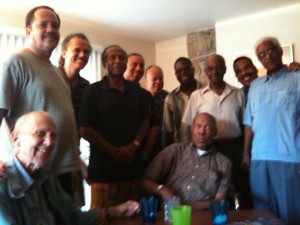
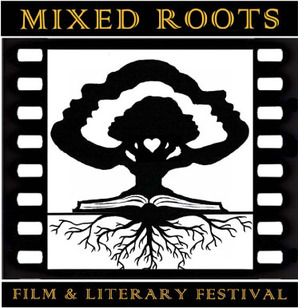
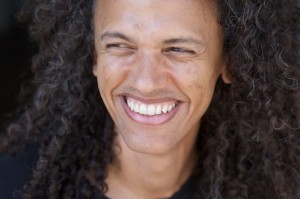

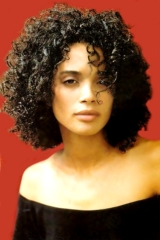
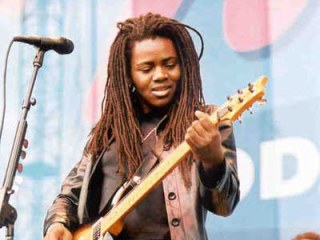
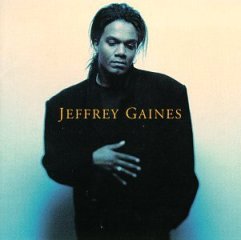
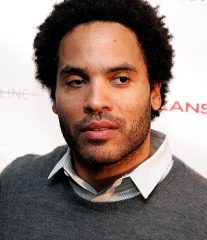
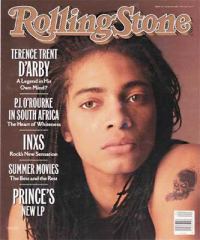

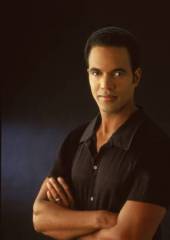
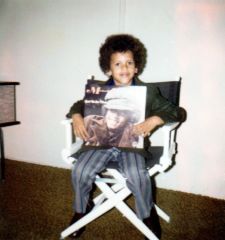
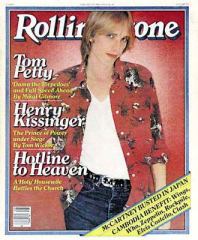
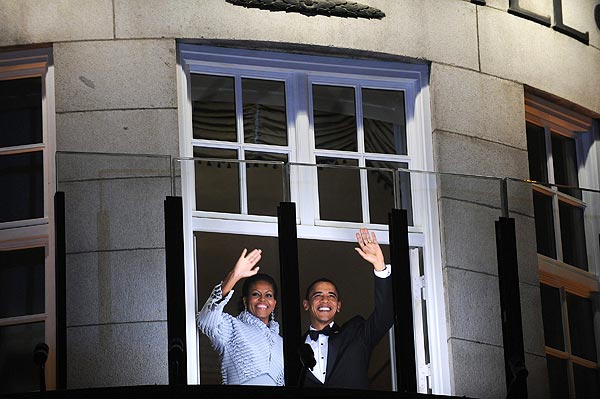
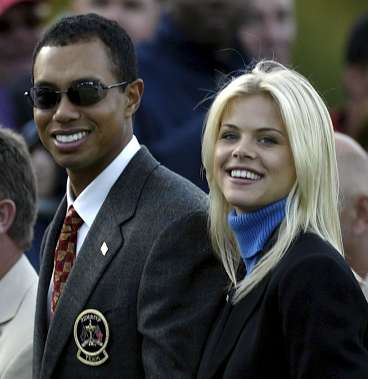
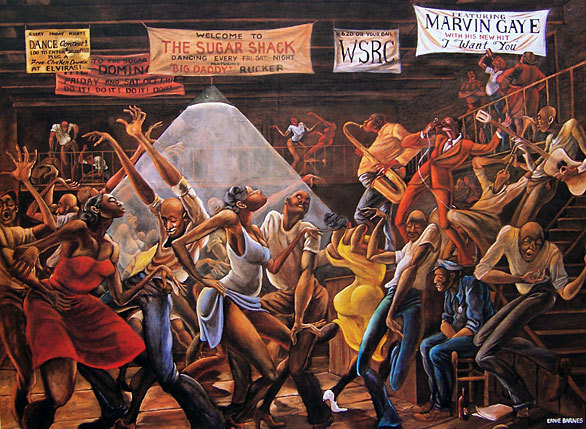
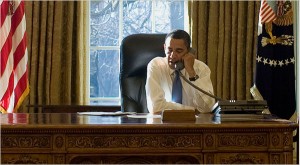


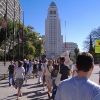

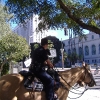
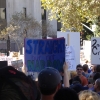
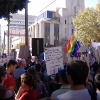



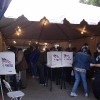


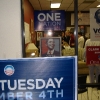
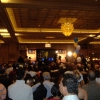
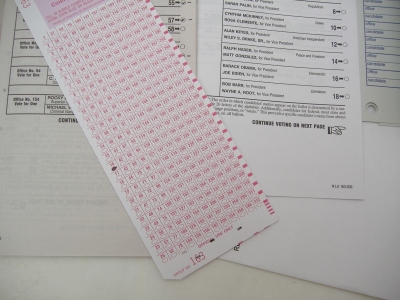
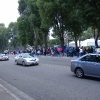

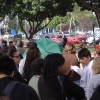


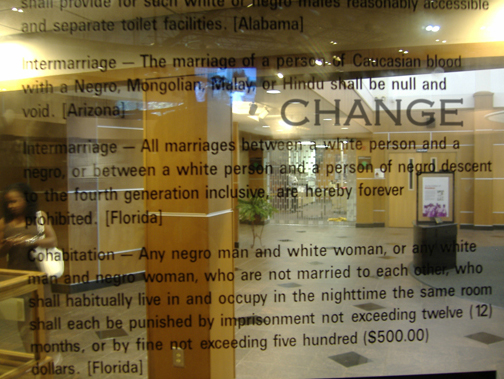

Iced Tea & Skittles
in a pickup truck,
whom the police have asked to remain in his vehicle,
comes into harm’s way
in the proximity of
a 17 year old boy
carrying iced tea and Skittles
walking in the rain
is if the man
gets out of his truck,
confronts the boy,
with a gun
hidden in his pants
the boy could be a martial arts expert
he could be a stoner
he could be a Harry Potter fan
one thing he is definitely not:
confronting people on a neighborhood street
carrying lethal force
That is George Zimmerman
It’s astounding to me that a man who initiated a confrontation carrying concealed deadly force, which he used to kill an unarmed minor, is not guilty of, at the very least, manslaughter. And at the end of it the smiling State Attorney says this trial was never about race, yet in the same breath conceding that she believes the boy was profiled. Are we that desperate to appear post-racial? Why was the trial not about that?
And guns?
No one would have died in Sanford, Florida of a gunshot wound on February 26, 2012 had George Zimmerman not profiled or carried a gun.
Trayvon Martin is dead.